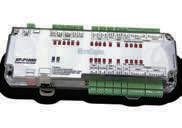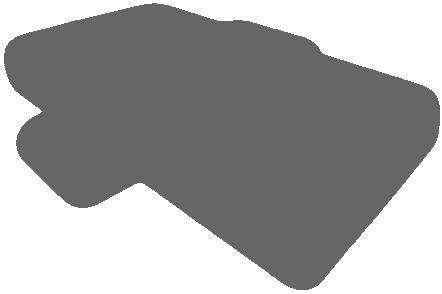
THE MONTHLY BULLETIN OF THE INSTITUTION OF ENGINEERS, MALAYSIA












































































































































We are pleased to inform that IEM will be holding the 58th Annual Dinner and Awards Night 2017 on 15 April 2017. Dimension Publishing has been appointed to put together the Annual Dinner Programme Book which will be circulated to all 1,200 guests on that night at One World Hotel, Petaling Jaya
It is an annual event organised by IEM to present awards to winners of projects and at the same time to announce the new committee for year 2017/2018. Special guests of honour will be invited to oficiate the event.
We are now calling for interested advertisers to book their preferred advertising position in this programme book. Below please ind the advertising rates for your immediate action and reply. We hope to hear from you soon before the closing date on 17 March 2017






Book Size: 210mm(W) x 285mm(H). Please provide extra 6mm for bleed area on all 4 sides
Printing Speciications : 230gsm art card (Cover), 105gsm art paper (Text), 4C + 4C, Staple binding, UV varnish on Cover
Quantity: 1,200 copies
Advertisement Format : High resolution PDF ile, with crop marks, bleed area, text being outlined
Deadlines : : 17 March 2017 (Fri) (Ad Booking) 24 March 2017 (Fri) (Artwork Submission)
Kindly tick in the relevant bracket. IEM reserves the right to edit, revise or reject any advertisement deemed unsuitable or inappropriate. The inal print-ready artwork to be furnished by advertisers.
Company logo will be appeared in the Acknowledgement Page in both IEM Dinner Programme Book (1,200 copies) and JURUTERA May 2017 (42,000 copies)
Remarks:
• Space availability is subject to booking on irst-come-irst-served basis
• Advertising rate is subject to 6% GST. Please take note that the advertising rates shown above exclude the 6% GST
• Prices shown above exclude 15% Advertising Agency commission
• Any cancellation after signing the Advertising Contract shall result in a 50% penalty charge
• Payment term: 14 days upon invoicing
Name of Company: Contact Person(s):
Company Stamp & Authorized Signature:
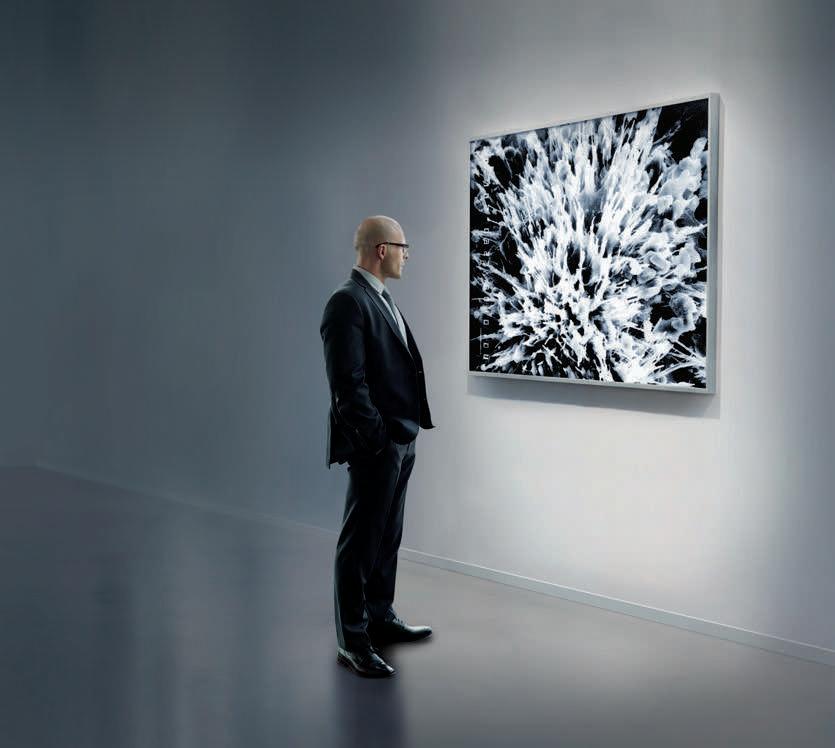
It has been over 50 years since Xypex Chemical Corporaion pursued an enirely new path, a radical departure from tradiional surface-reliant barrier products of the day, and developed a unique technology that takes advantage of the natural and porous characterisics of concrete. With water as the catalyst, Xypex’s proprietary chemicals react with the natural by-products of cement hydraion, forming a non-soluble crystalline structure within the interconnected pores and other voids in concrete. In this way, the crystalline structure becomes a permanent, integral part of the concrete matrix itself, prevening the ingress of water and other liquids even under strong hydrostaic pressure, and providing protecion against harsh, aggressive environments.
Since the introducion of Xypex, tens of thousands of concrete structures around the world have been protected with this unique crystalline technology and , over the years, extensive research, tesing and performance success have furthered the awareness, understanding and conidence in Xypex, earning both the technology and the company an enviable reputaion of extending the service life of Civil and Commercial Infrastructure and providing Sustainability in concrete structures by Crystallisaion.
For more informaion on how our soluions can provide sustainable beneits for your concrete assets, please visit our website at www.xypex.com.au or LinkedIn Page.
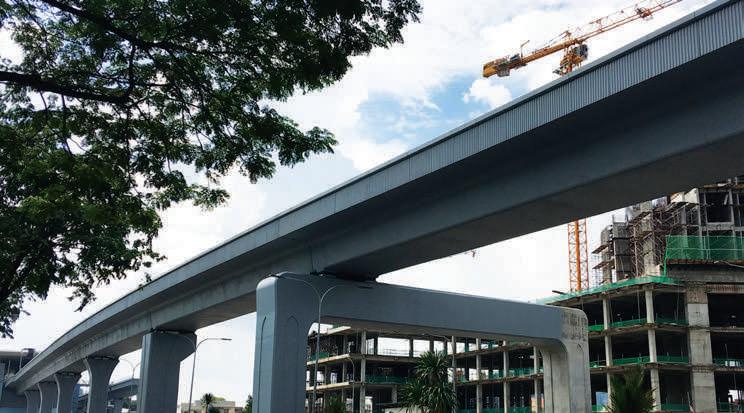
THE SOLUTION TO ACHIEVE A DURABLE CONCRETE STRUCTURE FOR PACKAGE V5
The construction of the first line of the Mass Rapid Transit (MRT Line 1) is near completion. As a matter of fact, the elevated track is composed of elements in direct contact with air pollutants typically found in large cities.
To prolong the life of these concrete structures, Sika has a series of hydrophobic impregnations, protective coatings and decorative finishes specially adapted to aggressive environments.
Sikagard®-700 MY-1 is a silane-based impregnation that will prevent the water to penetrate into the concrete structure. The product itself penetrates well into the open pores of the concrete, providing durable water repellency, while still allowing the concrete to breathe.
Sikagard®-680 MY is a high performance protective and decorative coating to cover the water-repellent Sikagard®-700 MY-1. It is resistant to weathering, carbonation, salts, alkalis and ageing. It is available in clear and coloured grades and promotes a self-cleaning effect on the treated substrates.

MAJLIS BAGI SESI 2016/2017 (IEM COUNCIL SESSION 2016/2017)
YANG DIPERTUA / PRESIDENT
Ir. Tan Yean Chin
TIMBALAN YANG DIPERTUA / DEPUTY PRESIDENT
Ir. David Lai Kong Phooi
NAIB YANG DIPERTUA / VICE PRESIDENTS
Ir. Prof. Dr Ruslan bin Hassan, Ir. Lai Sze Ching, Ir. Lee Boon Chong,
Ir. Prof. Dr Jefrey Chiang Choong Luin, Ir. Assoc. Prof. Dr Norlida bt Buniyamin,
Ir. Ellias Bin Saidin, Ir. Ong Ching Loon
SETIAUSAHA KEHORMAT / HONORARY SECRETARY
Ir. Yam Teong Sian
BENDAHARI KEHORMAT / HONORARY TREASURER
Dr Wang Hong Kok F.I.E.M.
BEKAS YANG DIPERTUA TERAKHIR / IMMEDIATE PAST PRESIDENT
Y.Bhg. Dato’ Ir. Lim Chow Hock
BEKAS YANG DIPERTUA / PAST PRESIDENTS
Y.Bhg. Academician Tan Sri Dato’ Ir. (Dr) Hj. Ahmad Zaidee bin Laidin, Y.Bhg. Dato’ Ir. Dr Gue See Sew, Y.Bhg. Dato’ Paduka Ir. Keizrul bin Abdullah, Y.Bhg. Academician Dato’ Ir. Prof. Dr Chuah Hean Teik, Ir. Choo Kok Beng
WAKIL AWAM / CIVIL REPRESENTATIVE
Ir. Prof. Dr Mohd. Zamin bin Jumaat
WAKIL MEKANIKAL / MECHANICAL REPRESENTATIVE
Ir. Dr Kannan M. Munisamy
WAKIL ELEKTRIK / ELECTRICAL REPRESENTATIVE
Y.Bhg. Dato’ Ir. Dr Ali Askar bin Sher Mohamad
WAKIL STRUKTUR / STRUCTURAL REPRESENTATIVE
Ir. Hooi Wing Chuen
WAKIL KIMIA / CHEMICAL REPRESENTATIVE
Ir. Prof. Dr Thomas Choong Shean Yaw
WAKIL LAIN-LAIN DISPLIN / REPRESENTATIVE TO OTHER DISCIPLINES
Ir. Roznan bin Abdul Rashid
WAKIL MULTIMEDIA DAN ICT / ICT AND MULTIMEDIA REPRESENTATIVE
Mr. Abdul Fatah bin Mohd. Yaim, M.I.E.M.
AHLI MAJLIS / COUNCIL MEMBERS
Ir. Gary Lim Eng Hwa, Y.Bhg Dato’ Ir. Hj. Noor Azmi bin Jaafar, Ir. Dr Aminuddin bin Mohd Baki, Ir. Mohd Radzi bin Salleh, Ir. Ong Sang Woh, Ir. Mohd Khir bin Muhammad, Y.Bhg Dato’ Ir. Hj. Hanapi Bin Mohammad Noor, Ir. Dr Ahmad Anuar bin Othman, Ir. Ishak bin Abdul Rahman, Ir. Chong Pick Eng (PE Chong), Ir. Ng Yong Kong, Ir. Tejinder Singh, Ir. Sreedaran a/l Raman, Ir. Roger Wong Chin Weng, Ir. Assoc. Prof Dr. Ahmad Kamil bin Arshad, Ir. Dr Tan Kuang Leong, Ir. Hoo Choon Sean, Y.Bhg. Lt. Jen. Dato’ Wira Ir. Ismail bin Samion (Ret. RMAF), Ir. Hj. Anuar bin Yahya, Ir. Mah Way Sheng, Ir. Gunasagaran a/l Kristnan, Ir. Chen Harn Shean, Ir. Mohd Aman bin Hj. Idris, Ir. Gopal Narian Kuty, Ir. Yap Soon Hoe, Ir. Santhakumaran a/l Erusan
AHLI MAJLIS JEMPUTAN/INVITED COUNCIL MEMBERS
Y.Bhg. Datuk Ir. Adanan bin Mohamed Hussain, Y.Bhg Dato’ Ir. Ahmad ‘Asri bin Abdul Hamid, Y.Bhg. Dato’ Ir. Low Keng Kok
PENGERUSI CAWANGAN / BRANCH CHAIRMAN
1. Pulau Pinang: Ir. Ting Chek Choon
2. Selatan: Ir. Mohd Khir Muhammad
3. Perak: Ir. Lau Win Sang
4. Kedah-Perlis: Ir. Prof. Dr Rezuwan bin Kamaruddin
5. Negeri Sembilan: Y. Bhg. Dato’ Ir. Zainurin bin Karman
6. Kelantan: Ir. Hj. Mohd Zaim bin Abd. Hamid
7. Terengganu: Ir. Atemin bin Sulong
8. Melaka: Ir. Dr Tan Chee Fai
9. Sarawak: Ir. Vincent Tang Chok Khing
10. Sabah: Ir. Hj. Yahiya bin Awang Kahar
11. Miri: Ir. Paul Chiew Lik Ing
12. Pahang: Y. Bhg. Dato’ Ir. Hj. Abdul Jalil bin Hj. Mohamed
AHLI JAWATANKUASA INFORMASI DAN PENERBITAN / STANDING COMMITTEE ON INFORMATION AND PUBLICATIONS 2016/2017
Pengerusi/Chairman: Ir. Prof. Dr Ruslan Hassan Naib Pengerusi/Vice Chairman: Ir. Mohd. Khir Muhammad Seiausaha/Secretary: Ir. Lau Tai Onn
Ketua Pengarang/Chief Editor: Ir. Prof. Dr Ruslan Hassan Pengarang Bulein/Bullein Editor: Ir. Mohd. Khir Muhammad Pengarang Prinsipal Jurnal/Principal Journal Editor: Ir. Prof. Dr Ruslan Hassan Pengerusi Perpustakaan/Library Chairman: Ir. C.M.M. Aboobucker Ahli-Ahli/Commitee Members: Y.Bhg. Datuk Ir. Prof. Dr Ow Chee Sheng, Dr Wang Hong Kok F.I.E.M., Ir. Santha Kumaran a/l Erusan, Mr. Abdul Fatah bin Mohd. Yaim, M.I.E.M., Ir. Chin Mee Poon, Ir. Yee Thien Seng, Ir. Ong Guan Hock, Ir. Dr Oh Seong Por, Ir. Tejinder Singh, Michelle Lau Chui Chui Grad. IEM
LEMBAGA PENGARANG/EDITORIAL BOARD 2016/2017
Ketua Pengarang/Chief Editor: Ir. Prof. Dr Ruslan Hassan Pengarang Bulein/Bullein Editor: Ir. Mohd. Khir Muhammad Pengarang Jurnal/Journal Editor: Ir. Prof. Dr Ruslan Hassan Ahli-ahli/Commitee Members: Ir. Ong Guan Hock, Ir. Lau Tai Onn, Ir. Yee Thien Seng, Dr Wang Hong Kok F.I.E.M.
Secretariats: Janet Lim, May Lee

NOTE Standards Drive Globalisation
COVER STORY Ensuring Technical Safety in Electrotechnology
FEATURE ARTICLES
ASEAN Engineering Inspectorate (AEI) – Guide to LV Electrical Installations .................................16
IEC Young Professional Frankfurt 2016: A Personal Experience .........................................21
IEM-ST Awareness Half-Day Seminar on MEPS for Motors .................................................28
Report of Talk on Liquidated Damages Under Construction Contracts .......................................31
Pre-AGM Talk on Temporary Works under BEM Guideline and MS1462 Metal ScaffoldingMandatory under CIDB Act 520 (Amendment 2011)..................................................32
IEEE-IEM eETD Mini Colloquium .......................35
Advancing Women Engineers’ Role in the ASEAN Community: A sharper Focus ................36
FROM BRANCH IEM Engineers’ Run 2016
Conical Houses of Alberobello
Publisher:
Explore our full set of Professional and Integrated PUBLISHING MANAGEMENT SERVICES:
» Project Management
» Creaive Management
» Ad Space Management
» Mailing Management
» Print Management
• Annual Reports
• Booklets • Brochures
• Bunings • Business Cards
• CD / DVD Replicaions
• Calendars • Cards & Invitaions
• Ceriicates • Custom Prinings
• Envelopes • Folders
• NCR Bill Books • Notepads
• Leaflets • Leterheads Posters



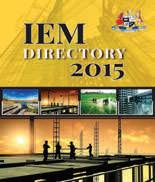

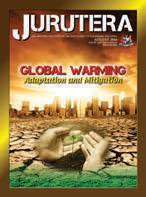
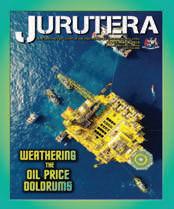




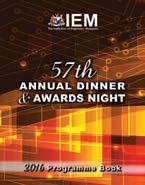






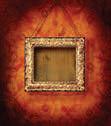



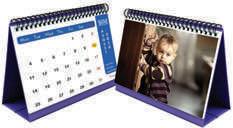














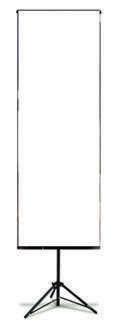


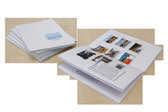
DIMENSION PUBLISHING SDN. BHD. (449732-T)
Level 18-01-03, PJX-HM Shah Tower, No. 16A, Persiaran Barat, 46050 Petaling Jaya, Selangor Darul Ehsan, Malaysia.
Tel: +(603) 7493 1049 Fax: +(603) 7493 1047
E-mail: info@dimensionpublishing.com
Website: www.dimensionpublishing.com
Chairman
ROBERT MEBRUER
CEO/Publisher
PATRICK LEUNG
General Manager
SHIRLEY THAM shirley@dimensionpublishing.com
Head of Markeing & Business Development
JOSEPH HOW joseph@dimensionpublishing.com
Editor
TAN BEE HONG bee@dimensionpublishing.com
Contribuing Writers
PUTRI ZANINA & ZOE PHOON putri@dimensionpublishing.com zoe@dimensionpublishing.com
Senior Graphic Designer
SUMATHI MANOKARAN sumathi@dimensionpublishing.com
Graphic Designer
NABEELA AHMAD beela@dimensionpublishing.com
Adverising Consultants
THAM CHOON KIT ckit@dimensionpublishing.com
Accounts cum Admin Execuive
YEN YIN yenyin@dimensionpublishing.com
For adverisement placements and subscripions, please contact:
DIMENSION PUBLISHING SDN. BHD. (449732-T)
Level 18-01-03, PJX-HM Shah Tower, No.16A, Persiaran Barat, 46050 Petaling Jaya, Selangor Darul Ehsan, Malaysia. Tel: +(603) 7493 1049 Fax: +(603) 7493 1047
E-mail: info@dimensionpublishing.com
Subscripion Department E-mail: info@dimensionpublishing.com
Printed by
HOFFSET PRINTING SDN. BHD. (667106-V) No. 1, Jalan TPK 1/6, Taman Perindustrian Kinrara, 47180 Puchong, Selangor Darul Ehsan, Malaysia. Mailer
PERFECT MAIL SERVICES (648839-P) 14 Jalan TSB 2, Taman Perindustrian Sungai Buloh, Sungai Buloh, Selangor Darul Ehsan, Malaysia. Tel: +(603) 6156 5288
JURUTERA MONTHLY CIRCULATION: 42,000 COPIES
Submission or placement of aricles in JURUTERA could be made to the:Chief Editor
THE INSTITUTION OF ENGINEERS, MALAYSIA (IEM) Bangunan Ingenieur, Lots 60 & 62, Jalan 52/4, P.O. Box 223 (Jalan Sultan), 46720 Petaling Jaya, Selangor. Tel: +(603) 7968 4001/4002 Fax: +(603) 7957 7678 E-mail: pub@iem.org.my or sec@iem.org.my IEM Website: htp://www.myiem.org.my
© 2017, The Insituion of Engineers, Malaysia (IEM) and Dimension Publishing Sdn. Bhd.
PUBLICATION DISCLAIMER
The publicaion has been compiled by both IEM and Dimension with great care and they disclaim any duty to invesigate any products, process, services, designs and the like which may be described in this publicaion. The appearance of any informaion in this publicaion does not necessarily consitute endorsement by IEM and Dimension. There is no guarantee that the informaion in this publicaion is free from errors. IEM and Dimension do not necessarily agree with the statement or the opinion expresssed in this publicaion.
COPYRIGHT
JURUTERA Bullein of IEM is the oicial magazine of The Insituion of Engineers, Malaysia (IEM) and is published by Dimension Publishing Sdn. Bhd. The Insituion and the Publisher retain the copyright over all materials published in the magazine.
of
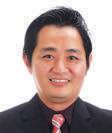
by Ir. Yau Chau Fong Chairman, Electrical Engineering Technical Division (EETD)
ave you ever wondered whether an engineering design done in Malaysia can be used in other parts of the world? Is it possible for our designs to be adopted and accepted by engineers in other countries?
Standardising engineering designs is deinitely one way forward to drive the electrical industry towards common goals such as safe electrical installation and common consumer products realisation. Hence, for the past one year, the EETD has embarked on a mission to promote standardisation in the electrical industry.
To mark our efforts in this, IEM EETD, with the support of the Department of Standards Malaysia (DSM), initiated the irst national-level 2-Day Symposium & Exhibition on Electrotechnical Standards in December 2016.
With the theme, “Standards Drive Globalisation”, our aim was to create awareness on the importance of Standards, in particular among the electrical engineering fraternity as this, in return, would drive our industry towards globalisation.
We were indeed honoured to have International President of the International Electrotechnical Committee (IEC), Dr Junji Nomura, deliver the main keynote address at the symposium. In this issue of JURUTERA, our cover story is a recent interview with Dr Nomura. Also featured is the summary of AEI’s Guide To Low Voltage Electrical Installations, launched last year in compliance with the requirements of IEC 60364-6 and BS 7671-6.
We plan to include the symposium and related events in IEM’s annual calendar of activities. In future, it may also trigger similar events, not just for the electrical industry but also for other engineering industries.
We thank all IEM members for their continuous support of EETD activities.
We welcome any comments/feedback from the readers in general in response to the articles published in the JURUTERA bulletin. Please post your comments to: sec@iem.org.my
Thank you. Editorial Board
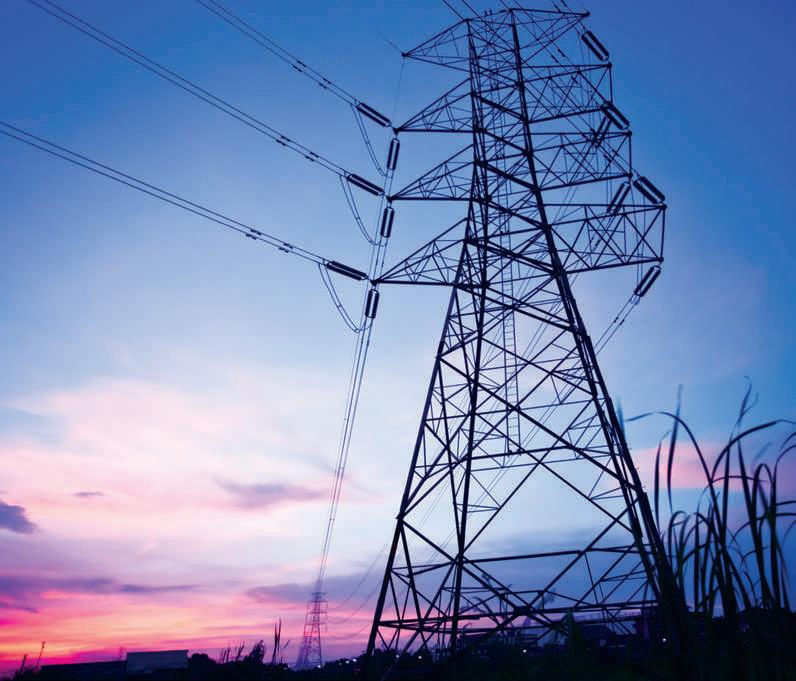
IEC is the leading organisation in the world that oversees International Standards for electrotechnology with a focus on technical safety of products, devices and components. IEC President Dr Junji Nomura, talks about the vital work of this organisation.
Founded more than a century ago, in 1906, the International Electrotechnical Commission (IEC) is the world’s leading organisation that prepares, develops and publishes International Standards for all electrical, electronic and related technologies, collectively known as electrotechnology. IEC also operates conformity assessment systems in this ield.
IEC takes pride in bringing together 170 countries worldwide and close to 20,000 experts from industries, commercial enterprises, governments, test and research laboratories, academia and consumer groups to take part in IEC standardisation work. They co-operate on the common IEC global platform to ensure that products are safe for use and can perform, it and work safely together.
Efforts to bring together governments of the various countries as well as a huge number of industries and
companiestodiscuss,developandusetheIECInternational Standards are massive, yet the IEC continues to remain committed to its course, thanks to its visionary leadership. IEC’s highest decision-making body is the Council Board, helmed by its Chairman who is also the IEC President, Dr Junji Nomura.
DrNomurabecameIECPresidenton1January,2014,for a three-year term, having served as President-Elect since 1 January 2013. He is currently the Corporate Advisor, Energy Solution Business Promotion, at Panasonic Corporation, Japan.
JURUTERA speaks to Dr Nomura to learn more about the progress of IEC and its important work in preparing and promoting International Standards in the ield of electrotechnology. Also adding input to the interview with Dr Nomura are Dennis Chew, Regional Director of the
International Electrotechnical Commission Asia-Paciic Regional Centre (IECAPRC), and Ir. Yau Chau Fong, Chairman of IEM’s Electrical Engineering Technical Division.
QWhat is the biggest milestone of IEC since its inception 111 years ago?
Dr Nomura: This is subjective but I think our biggest milestone is the recent rapid growth of the IEC family. From 62 countries at the end of 1999, the membership has increased to 170 countries. The advent of the IEC Conformity Assessment (CA) Systems, together with the IEC International Standards, provides a globally unique quality and risk management tool to companies and regulators alike.

QDr Junji Nomura is IEC President (2014 to present) and Corporate Advisor, Energy Solution Business Promotion, Panasonic Corporation (2011 to present)
What is the ultimate goal and nearest vision of IEC?
Dr Nomura: Our vision statement is “IEC Standards and Conformity Assessment Programmes – the key to international trade”. Based on this, the IEC promotes world trade and economic growth as well as encourages the development of products, systems and services that are safe, eficient and environmentally friendly.
I believe our nearest vision would be the adoption and/or use of IEC Standards without deviations and the acceptance of conformity assessment systems certiicates and reports by every country in the world. This will not only facilitate global trade but will also ensure quality, safety and protection to the environment, among others.
As for deviations from the IEC Standards speciications, member countries should not deviate too much. We want quick work and quick activities of IEC and its members, so there must be quick response to IEC Technical Committees (TCs).
We are educating members to give a quick response to TCs as otherwise, there will be a backlog of new products and devices in many countries or factories. We must think together for new products and devices to have technical safety and these must be functional but we must always check the duration for achieving these so that there will be no delays in the work of the TCs. Members, especially those which are not market leaders, have to change. We know it is dificult to get new products and devices to satisfy all the technical safety requirements within one year. Normally, it takes three years and we allow this.
Chew: On record, IEC guidance is three years. On average, it is 34 months (2.8 years). If it takes more than ive years, IEC will ask the affected TCs to stop work, and start something else. But sometimes the TCs have good reasons, so we will
consider extensions and appeals on a case-to-case basis.
QWhat is IEC Standards’ adoption rate globally?
Dr Nomura: While we currently do not mandate National Committeestoreportonit,we are now initiating, for Council approval, the requirement for National Committees to fully declare this information. However, the rate of adoption of the International Standards is high; otherwise companies globally cannot manufacture products and the required devices, which must also be produced according to the International Standards.
Take for example, Murata, a famous device maker in Japan. Although it is small in size, it is a high-proit company and its target is to make its devices quickly and according to IEC International Standards. As the lifetime of these devices is short, a quick response to safety compliance is needed and important to them.
QWhat role can Malaysia play in IEC? For example, is there any technical committee that Malaysia can be more active in?
Dr Nomura: Malaysia currently has Participating Membership in 28 TCs and Sub-Committees (SCs) and Observer Membership in 66 TCs/SCs. Malaysia can choose to be more active by nominating more experts to participate or even lead Working Groups, Project Teams and Maintenance Teams in the TCs/SCs of which it is a Participating Member. On the conformity assessment side, we are pleased to share that, last year, Malaysia was elected a member of the IEC Conformity Assessment Board. Malaysia is also very active in the International Electrotechnical Commission for Electrical Equipment (IECEE), where it regularly issues and recognises test certiicates, and in International Electrotechnical Commission Explosive (IECEx) particularly in the programme to evaluate the competence of personnel installing, maintaining and repairing explosive equipment andsystems.IECExisthebodythatdevelopstheIECSystem for Certiication to Standards Relating to Equipment for use in Explosive Atmospheres (IECEx System).
Chew: Involvement in IEC must always be dynamic but, more importantly, Malaysia must check new committee setups and take note of new work coming up in industries. There are also players who work with companies and these must be aware of the importance of participation in TCs and support them. The participation should not be seen as a form of national service but rather, it is also for the beneit of their companies. It is important for their companies to

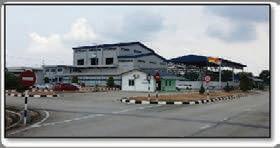
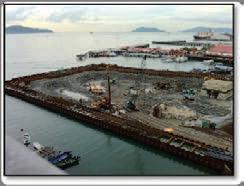

No.
Petaling Jaya, Selangor Darul Ehsan
Tel: (03) 7957 5344 Fax: (03) 7957 5210
Website : www.cementaid.com.my Find Us On



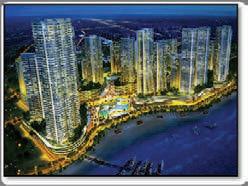



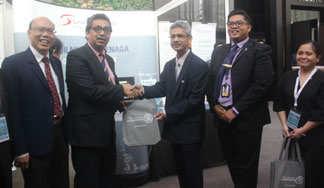
be involved as well. They represent their companies and, at the same time, become relevant in TCs and support the work of national bodies such as SIRIM and others.
Ir. Yau: Many of us represent organisations such as IEM and others. In fact, because of high occurrences of lightning in our tropical region, we are active in IEC TC 81 (Lightning Protection) and in IEC TC 31 (Equipment for Explosive Atmospheres), particularly for the oil and gas sector. These cover not only equipment but also every aspect that has to do with product certiication, including human competency.
IEM is also involved in the committees for relevant Standards development in Standards Malaysia. Participating in symposiums involving Standards Malaysia, where most of our engineer members are also present, is important because we want our members in the electrical and electronic sector, to be more involved in Standards committees. It is also a good move to create awareness, particularly on IEC and International Standardisation, and to encourage our members to participate, especially young engineers and professionals. We have been sending them to join talks and symposiums so as to get them more involved in Standards committees.
QHow can we better adapt IEC International Standards,takingintoaccountfactorsatlocal levels, such as environment?
Dr Nomura: IEC Standards are developed largely based on input from the experts participating in the respective
TCs and SCs. At present, there are around 20,000 experts participating at the global level and thousands more contribute via mirror committees of member countries. MoreactiveparticipationofexpertsfromMalaysiawillallow them to share the country’s additional needs and concerns so that local level factors can be fully addressed. Overall, this allows Standards to become better and more relevant for more countries. It will also simplify the adoption of IEC International Standards in Malaysia without further national modiications.
Some IEC Standards also take into account not only the environmental factor but also the materials used in production. Some may consider this as a restriction that may affect design and machines but the IEC Technical Safety Division considers all factors as a form of community care. Everyone’s safety is important and company engineers involved in the design and development of a product, component and device must communicate with us. Some refuse to, maybe because of the design secret factor.Internalcommunicationisachallengebutfordesign success, electrotechnical safety is a requirement and engineers must communicate and work with us. The result is not for IEC but for the companies and their engineers as well. Communication must be more open to achieve design success.
QBesides IEC, there are many other global Standards bodies, such as the International Organization for Standardization (ISO), American National Standards Institute (ANSI) and the British StandardsInstitution(BSI).Duetothelocalnational and industry-speciic requirements, it is dificult to harmonise these Standards. What collaborative efforts has the IEC taken with other Standards bodies?
Dr Nomura: IEC, ISO and the International Telecommunication Union (ITU) collaborate through the World Standards Cooperation body. At the purely technical level, there are many joint efforts, including establishing liaisons that help avoid overlapping in various works and forming joint working groups where work can be shared.
Additionally, the IEC has put in place a Systems Approach with the aim to stimulate co-operation and,
wherever possible, eliminate duplication. We now have Systems Evaluation Groups and Systems Committees covering a wide range of topics, including Smart Cities, Smart Energy and Smart Mobility, Microgrids and Active Assisted Living.
With this mind-frame, the IEC had, for example, successfully organised the World Smart City Forum in Singapore in July 2016, in partnership with ISO and ITU and we invited all major Standards organisations in an effort to streamline and better co-ordinate the development of Standards for Smart Cities.
The reality is this: No single organisation can deliver all the Standards needed for increasingly big systems. Co-operation is absolutely essential. Our stakeholders, including industries, absolutely want to avoid duplication and waste. They look to the IEC to help streamline standardisation efforts in everything that uses electricity or contains electronics and to bring on board all the appropriate expertise.
QWhat is your view on Standards development for developing nations, especially in the ASEAN region?
Dr Nomura: We strongly encourage more active participation of ASEAN countries in the IEC TCs/ SCs. In particular, we introduced IT tools to facilitate participation. Recently, we introduced Public Commenting that would allow any company to view and comment on draft Standards and so contribute to the development of IEC International Standards via its National Committee.
IEC has also introduced a Mentoring Programme where a more developed and established National Committee can mentor a National Committee that is less mature on speciic technical areas. Through this arrangement, the mentor will provide support which will strengthen the mentee’s knowledge and encourage its active participation in the committees that are of interest to it.
QCurrently, there is an intention in the ASEAN region to harmonise the electrical Standards among its member countries to facilitate potential growth and support the plans of the ASEAN Economic Community (AEC). What are your views on this?
Dr Nomura: This will be a very positive development. The AEC’s plans will be far better implemented if the various ASEAN member countries can adopt, not only the same IEC International Standards without deviations, but also the same edition of the International Standard, and to accept newer versions of it. As a result, this will not only beneit ASEAN but also its ability to export to international markets and to participate in global value chains.
IEC also operates four Conformity Assessment Systems where test results are mutually accepted by the participating certiication bodies. The tests are done according to IEC
international Standards and accepting the results will help support the AEC, too.
Essentially, Electrotechnical Standard is an international technical safety Standard and the IEC is the only international body that oversees this although, domestically, countries may have their own national Standards bodies. Another international body is ITU which oversees telecommunication systems; it is also a kind of international union society for global Standards for telecommunication.
IEC is, in fact, older than the ISO, which was formed in 1947, so that makes it only 70 years old. We have been doing studies on electrotechnical safety since we were established in 1906 and, over time, safety Standards have been improved. That is our focus. The electrotechnical safety programme is very important for the safety of human beings. For example, if an electrical item is not properly installed, it may cause an electric shock and that is dangerous to humans.
Electrotechnical safety involves not only products and systems but also many devices and sensors. Each product has many components and every component must be safe for use. Therefore we have so many TCs in IEC to cover products, systems and devices, including components. If electrical product makers want to make new products, we have to ensure that the new devices that they need are safe and correspond with the electrotechnical safety needed.
It is the same for ASEAN countries. For example, Japan hasmanymanufacturers,suchasPanasonic,Sanyo,Hitachi etc. These also want to make their products for the ASEAN region, so ensuring these products are safe and follow IEC international technical Standards is also very important. It is international Standard, not country Standard.
The situation in the various countries may be different; therefore uniting to adopt IEC International Standards is vital.ButalthoughitisconvenienttoadoptIECInternational Standards, working with the different countries can get complicated and realising unity can be dificult.
Chew: Yes, there is an Asean initiative to harmonise Standards. In fact, there’s a meeting among regulators for electrical and electronic equipment and products, and they refer to the list of IEC Standards as reference Standards. This is a step in the right direction.
QInMalaysia,SIRIMisthenationalresearchand technology development body which also provides testing and certiication services. Does SIRIM comply with IEC requirements?
Chew: There are two different things here. One is Standard as a publication and then there is conformity assessment to do veriication so that products meet the Standards requirements. SIRIM’s work mainly involves conformity assessment which is important to verify whether products meet the Standards.
SIRIM tests products according to the IECEE, which is the IEC System for Conformity Assessment Schemes
for Electrotechnical Equipment and Components. It is a multilateral certiication system based on IEC International Standards. SIRIM is a member of IECEE. Its members use the principle of mutual recognition (reciprocal acceptance) of test results to obtain certiication or approval at national levels around the world. Member countries recognise each other’s test results as these are based on the IECEE and they all follow the same certiication system.
Many of the tests are to help companies sell in more markets. International companies do not manufacture for just one country but for many markets. So they can go to organisations like SIRIM and say that they are exporting to various countries and ask for their products to be tested and certiied according to IEC International Standards. Some products may require slight modiications; the testing body will also conduct tests on the modiications done.
Essentially it is only one list of International Standards for many different markets. The base is the IEC product-speciic Standards. There are different Standards for different products. For example, there is a safety Standard for microwave ovens and another Standard for refrigerators. We make sure these International Standards are complied with.
Dr Nomura: Initially, we decide on technical safety. Then we focus on how to test using testing systems and facilities. If proper tests are not done, it will be dificult to get certiication.
Testing will give assurance on the safety of the products and components. Safety has always been, and will always be, the focus of IEC.
IEM Electrical Engineering Technical Division and Standards Malaysia organised the “Electrotechnical Symposium & Exhibition 2016” on 5-6 December, 2016 in Subang Jaya, Selangor, with the theme, Standards Drive Globalisation.
IEM President Ir. Tan Yean Chin delivered the welcome address. Officiating at the opening ceremonywasDeputyMinisterofScience,Technology and Innovation Datuk Dr Abu Bakar bin Mohamad Diah representing the Minister. Also present was Datuk
Ir. Ahmad Fauzi Hasan, Chief Executive Oficer of the Energy Commission and International Electrotechnical Commission (IEC) president Dr Junji Nomura.
The symposium, attended by more than 800 participants, focused on four main themes: Standards Drive Globalisation, Electrical Installation, Oil & Gas Industry and Consumer Products.
On the irst day, there were four speakers in the morning: Dr Junji Nomura spoke on “Global In Standardisation”, Encik Ridzwan Kasim, Senior
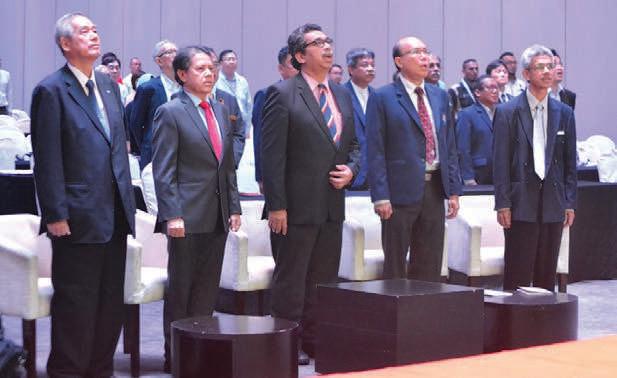
Director of Standards Malaysia on “Standardisation Activities in Malaysia”, Datuk Seri Ir. Azman bin Mohd, President/Chief Executive Oficer of Tenaga Nasional Berhad on “Importance and Beneits of Standards in the Electric Utility Industry” and Ir. Rocky Wong Hon Thang, Chairman of ACPECC-SGM on “Standards Drive Globalisation”.
In the afternoon, the Electrical Installation session started with Ir. Chris Chew, Vice Chairman of MyENC, giving a keynote address on “Engaging Contractors in Standards Compliance”. This was followed by Dato’ Ir. Ibrahim Abu Bakar, Vice Chairman of ISCE who spoke on “Generation, Transmission and Distribution of Energy”. Encik Lokman Dahlan, Ir. Lim Kim Ten, Prof. Ir. Dr Zainal Abidin Abdul Kadir and Ir.AbdulRahimIbrahimspokeonelectricalinstallations. They are experts in cables, electrical installations, lightning protection and energy respectively.

Committee (ExMC), delivered the keynote address on “Standards & the Oil & Gas Industry”. This was followed by Ir. V.R. Harindran, Ir. Quah Ewe Hock and Ir. Tiong Kung Sing who spoke mainly on the explosive and hazardous environment in Oil & Gas industry.
FortheinalsessiononConsumer Products, EncikMohdElmibinAnas, Chairman of National IECEE CB Management Committee (CBMC) spoke on “Statistic of Electrical Incidents in Malaysia” and Mr. VT Doshi, Vice Chairman of ISCS, spoke on “Current Development of International (IEC) and Malaysian (MS)SafetyStandardsonHousehold and Similar Electrical & Electronic Appliances”.
Four other speakers – Encik Zulkilee Umar, Mr. Tee Tone Vei, Prof. Dr Nasrudin bin Abd Rahim and Assoc. Prof. Dr Samsul Bahari Mohd Noor – also spoke on consumer products.
Day Two started with the Oil & Gas Industry session.
Ir. Mohammad Faudzi bin Mohd Yasir, Chairman of National Explosive Atmosphere Management
The event was sponsored and supported by organisations such as Mun Hean Sdn. Bhd., HVTL Test Lab Sdn. Bhd., Ablecon Power System Sdn. Bhd., Bureau Veritas Sdn. Bhd. and TNB-ILSAS.


Authors' Biodata

Dr Siow Chun Lim obtained his Bachelor of Electrical & Electronic Engineering from University Putra Malaysia, Selangor, in 2011. In 2014, he obtained his Ph. D from the same university. His research interests include electrical grounding systems, high voltage experiments and engineering education. He is also Associate Editor of Journal of Engineering Science & Technology.


The Institution of Engineers, Malaysia (IEM) is concerned about the decline in the number of secondary school taking up Science, Technology, Engineering and Mathematics (STEM). This will result in a decline in the enrolment for engineering courses in universities. The consequences are disastrous as it will mean there will not be enough engineers to implement and maintain development projects in the country. This will cause the development of the nation to stagnate.
Countries which want to achieve developed status and maintain that status, will require signiicant numbers of engineers. The “Ratio of Engineers to Population” is used to benchmark whether a country has enough engineers for development. Developed nations such as the United Kingdom, France, Canada and Germany, have a ratio that varies from 1:75 to 1:150. What this means is that for every 75 or 150 people, there is at least 1 engineer.
Last year, our country’s population stood at 31.7 million. AccordingtotheBoardofEngineers,Malaysia(BEM),which registers and regulates all engineers in the country, there are some 110,000 registered engineers. IEM, as a society for engineers from all disciplines, has a membership of more than 40,000.
However, it is estimated that the actual number of engineers in Malaysia is around 200,000 as there are signiicant numbers of engineers who are not registered with the regulatory bodies. With this number, we have a ratio of close to 1:150, which is healthy for the time being. We should, however, target a ratio of 1:100 by year 2020, in order to expedite the pace of our transformation into a developed nation.
AccordingtotheWorldEconomicForum2016,about35% ofskillswhichareconsideredimportantintoday’sworkforce, will change within the next 5 years. In the future, 80% of jobs will require some form of STEM background or education.
World Economic Forum 2016 predicts that, by year 2020, some 2 million jobs created worldwide will be related to the ields of Computer, Mathematics and Engineering.
The Ministry of Science, Technology and Innovation (MOSTI) estimates that there will be a shortage of 236,000 scientists and engineers by 2020.
There are several factors underlying the declining interestinSciencesubjectsandtheengineeringprofession. TheseincludethelossofinterestinSTEM,themisconception

Ir. Tan Yean Chin President
that engineers do not earn much, the misconception that engineersdojobsthataredirty,dificultanddangerousand the lack of Government incentive to promote engineers to top position in the civil services.
It is not true that engineers earn less than their peers in other professions. With their education and training, engineersaregenerallymoreanalyticalandcarefulasthey are well versed with numbers. In reality, engineers earn as much as any other professional. However, they tend to keep a low proile and so have created the impression that the engineering profession is less glamorous, compared to other professions. But in reality, many CEOs of listed companies in Malaysia are engineers.
This declining interest in STEM is worrying for the development of the country. Currently, less than 30% of Form 4 students are in the Science Stream (it used to be 50%). Malaysia is targeting for 60%.
Young people today seem to prefer to take up studies related to business, inance and management instead of STEM-based subjects.
STEM-based degrees such as engineering, have a higher entry requirement. Courses are also generally more demanding and require at least 4 years of study.
It’s not true that an engineer’s job is dirty, dificult and dangerous. Engineers work in comfortable, safe and clean environments.
A better prospect for engineers to reach top posts in the government sector as well as better status recognition for engineers can be a motivation factor for school students to take up STEM Education and then pursue a career in engineering.
Government recognition of the contribution of engineers and providing a structural pathway to the top position in the Civil Service (e.g. KSN and KSU) will be a big motivator for students to pursue STEM education and engineering.
While it is important to produce more STEM students and engineering graduates to meet the national demand, it also of paramount importance to address the quality of these graduates.
With fewer students taking STEM subjects, there will be a drop in the standard of students who enrol in engineering courses. This, in turn, will result in a potentially lower quality of engineering graduates.
In 2015, IEM published a Position Paper on “Benchmarking the Quality of Engineers”, which
highlighted the major concern over the quality and trainability of fresh graduates from local universities due to the lower standard of secondary school students. The findings from that Position Paper, which addressed the need to raise the standard of engineering graduates, was presented to the Ministry of Higher Education.
IEM lauds the Government’s efforts to promote greater interest and awareness of Science and Mathematics
programmes in schools. IEM is also actively doing its part by conducting career awareness talks as well as holding competitions and exhibitions on interesting engineering projects in schools.
Engineering students are also encouraged to join IEM as Student Members as this will give them access to IEM’s resources such as joining IEM activities, talks and networking sessions.
1 In line with Bylaws Section 4.2 and 4.3, we are pleased to attach herewith your membership renewal notice for 2017. Kindly be informed that the annual subscription rates excluding the 6% GST for 2017, which will become due from 1st January 2017 are as follows:
COMPANION / GRADUATE / AFFILIATE / INCORPORATED MEMBER, who is on the 2017 have attained the age of 30
155.00 - have not attained the age of 30
ASSOCIATE MEMBER, who is on the 2017 : - have attained the age of 30
155.00 - have not attained the age of 30 :
STUDENT MEMBER, who is on the 2017 - have attained the age of 30
100.00
RM 155.00 - have attained the age of 24 : RM 100.00 - have attained the age of 24 and are bona fide students of institutions of higher learning : RM 20.00 - have not attained the age of 24 : RM 20.00
Note: Kindly be informed that as per our announcement on 1 October 2015, GST is chargeable on IEM Subscriptions at the rate of 6%.
Members, whose applications for transfer of grades are pending, are advised to remit the subscription for their existing grades. You will be notified of the difference in fee payable when Council approves your application.
Mode of Payment
Payments may be made as follows:-
i. IEM Head Office Secretariat - By cash or cheque / money order / postal order / bank draft / credit card (Visa/Master)
ii. Online payment / - Maybank2u / RHBNow / Visa or Master via MyIEM portal Internet Banking *(real time payment with online receipt) / CIMB Clicks
iii. By post - Cheque / money order / postal order / bank draft / credit card (Visa/Master)
Cheque / money order / postal order / bank draft are to be made payable to “The Institution of Engineers, Malaysia” and returned together with the attached Form A Kindly write your name and membership number at the back of your cheque / money order
3.1 IEM Affinity Programme - CIMB Cardholders
All cardholders are reminded that automatic deduction of your Annual Subscription had been implemented. It is therefore NOT necessary for Cardholders who have signed up for this facility to remit payment
Kindly contact secretariat at 603-7968 4025 to enable/disable this facility.
To pay online, kindly login to your account at www.myiem.org.my. You can also download Form A from the IEM website.


The ASEAN Engineering Inspectorate (AEI) – A Guide to LV Electrical Installations provides a recommendation on the proposed minimum requirement for veriication by inspection and testing for compliance to statutory and regulatory requirements and the IEC 60364-6 and BS 7671-6 standards for a low voltage electrical installation of buildings.
Low voltage is deined as voltage not exceeding 1000V AC or 1500V DC between conductors. The document details the inspections from planning to after erection, safety, functionality and performance testing as well as tests after energisation.
Inspection of an electrical installation checks for adherence to design and functional intent, compliance to statutory and regulatory requirements and standards, quality and condition of work done and equipment supplied at site, condition of site which may adversely affect performance or safety, with supervision by the submitting person.
Inspection before erection focuses on the design and factory documentation, quantity and quality of equipment and material as well as proposed method statements. During erection, the focus shifts to the correctness of the work done and material use in adherence to the proposed method statements, coordination of work between contractors and proper reporting and recording of any incidence. After erection, a final check is performed on all work and equipment quality, electrical system safety, integration and functionality and for any influence or impact of the actual site condition on the electrical system's safety or performance. The AEI guide also recommends the inspections be performed for installation with confined spaces, as defined by Occupational Safety and Health Administration (OSHA).
Testing will need to be carried out to ensure that all critical aspects of the electrical system that are dificult to determine with visual inspections alone, are veriied and conirmed to be correct and safe. Elements of safety, functionality and performance are established through testing. Table 1 lists the recommended tests ought to be performed by competent person with calibrated and or veriied test instruments.
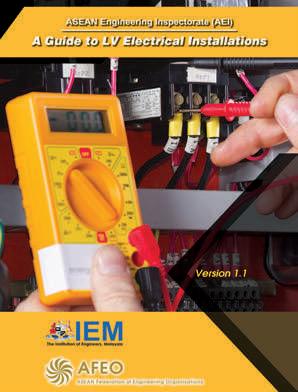
The irst test to be conducted is the circuit conductor continuity test. A multimeter or an Ohm meter is used to check the continuity from the power source such as the distribution box to the load or socket outlet, for the live, neutral and protective conductors. The continuity test veriies that all later tests will correctly measure the values for the entire length of conductor and will avoid any rise in potential if the circuit protective conductor and bonding are not in place or disconnected when carrying out other tests.
Table 1: Tests recommended by the AEI Guide
Continuity of circuit conductors test
Functionality of electromechanically/ mechanically operated devices
Insulation resistance (IR) testLightning and surge protection system
Polarity testCircuitry check
Earth electrode resistance (EER) test
Earth fault loop impedance (EFLI) test
Residual current device (RCD) complying with IEC 61008 or 61009
Lighting installation
Measuring and indicating equipment
Functionality of all items of equipment/ systems, which include busbar, generator, power drive, low voltage switchgear and controlgear
It is recommended that the protection conductor, live and neutral conductor as well as inal ring circuit conductor be subjected to continuity tests. An ohmic reading of less than 1Ω is strongly recommended as the acceptable level of continuity.
The insulation resistance test is then performed to verify the dielectric strength of the cable insulation and to detect any inadvertent connection between live conductors or from a live conductor to earth. An insulation resistance tester of 250V (DC) or 500V (DC) is used and the measured value is checked to see if it is above the allowed minimum values. Table 2 illustrates the minimum values of insulation resistance as per recommendation by IEC 60364-6.
Table 2: Minimum values of insulation resistance
Nominal Circuit Voltage
Safety Extra Low Voltage (SELV) and Protected Extra Low Voltage (PELV)
Up to and including 500V, with the exception of the above cases

(MΩ)
Above 500V10001
Next, in the polarity tests, single-pole switches, fuses and circuit breakers are veriied to be connected to the live conductor, not to the neutral conductor. Any wrong polarity connection can lead to a dangerous situation of a conductor that stays live, without the knowledge of the user, even when the switch is off. Again, a low ohmic reading of less than 1Ω as indicated by the measuring equipment, shall be recommended.
An effective earthing system is critical in an electrical system protection, to allow tripping of the protection device and to prevent any dangerous rise in potential. Therefore, the earth electrode resistance test is conducted to measure the resistance of any leakage current low to earth. The fault loop impedance test measurement measures the complete loop impedance value while the earth electrode test instrument and the current clamps method measures the individual resistance of each earth electrode. Prior to performing the earth fault loop impedance test, it is paramount to ensure that the earthing conductor and all relevant earth connections are in place. In addition, the equipotential bonding connection to the electricity supplier’s earthing facilities must also be disconnected. Finally, any earth leakage protective device must be isolated during the test.



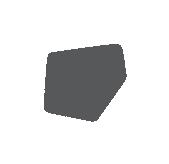





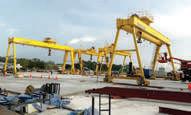

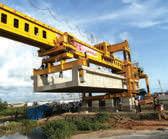
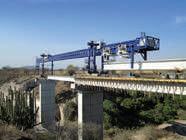
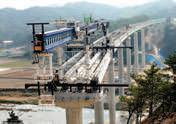


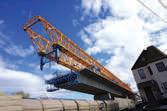
Table 3: Partial checklist of low voltage switchgear and controlgear test
Nameplate information and labelling of equipment
Adequacy of documentation from manufacturer
Arrangement of switchgear and components arrangement against manufacturer’s operation and maintenance manual
Enclosure for proper alignment, foundation fixing, and grounding and vermin entry
Covers, sections and doors for paintwork and proper fit
Proper alignment of the primary and secondary contacts
Power factor correction capacitor bank
Harmonic filter/reactors
Automatic changeover switch
Instrumentation and protection devices
Incoming/outgoing busbars and cables
Operating handles/ keys
Correct phasing connection of bus bar and cabling works Torqueing test
Residual Current Devices (RCDs) minimises any danger associated with leakage current, but the RCD’s proper operation is critical. RCD tests are carried out with an RCD tester which injects a speciic leakage current through to earth, then measures and displays the time taken for the RCD to operate and open the circuit. The RCD in-built test button should also be tested for proper functioning of the RCD.
The low voltage switchgear and controlgear at the main switchboard and distribution boards as well as busbar systems,aretestedforfunctionality,continuityandelectrical insulation. Mechanical operations, alignments and bolt torques are veriied. Protection relays and measurement instruments are calibrated and tested. Primary injection is performed to test the stability of the protection system. Table 3 lists some of the items that should be checked:
A complete lightning protection system consists of air terminations, down conductors and earthing terminations. Hence, the lightning protection system should be tested for continuity between air terminations, down conductors and earthingterminations,withthecombinedresistancetoearth to be less than 10 Ohm. Visual inspections are performed to verify proper installation of the down conductors and earth electrodes.
In addition, the AEI guide describes the steps for circuitry check, lighting installation test and test of other major equipment such as the generator set and power drive system. Circuitry check is performed to verify that the installed circuit is in complete accordance with the
designated circuit. This is done via switching operation. On the other hand, the lighting installation test is performed mainly to check the luminaries, illumination level, lighting uniformity and a few other aspects.
Upon completion of the testing, and with all relevant authority approvals obtained, the electrical installation should only be energised by a competent person. After energisation, measurement of the nominal voltage and veriication of the phase sequence should be performed on each circuit. The nominal voltage at no load shall comply with the requirements of IEC 60038. Equipment and appliances should be carried out in accordance
with relevant product standards and manufacturer’s speciications.
Authors' Biodata
Ir. Ng Win Siau, graduated from the National University of Singapore with a Bachelor of Engineering and a Master of Engineering in Electrical Engineering. He is currently with Perunding MM 20-20 and is a member of IEM.
Dr Siow Chun Lim, obtained his Bachelor of Electrical & Electronic Engineering and Ph.D in Electrical Power Engineering from Universiti Putra Malaysia, Selangor. His research interests include electrical grounding systems, high voltage experiments and engineering education. He is currently Associate Editor of Journal of Engineering Science and Technology.

The third meeting of the AFEO Energy Working Group was held at the recently concluded CAFEO 34 (Conference of ASEAN Federation of Engineering Organisation) in Palawan Island, The Philippines, in November 2016. The meeting was attended by delegates from Malaysia, Singapore, Thailand, The Philippines, Myanmar, Cambodia and Indonesia.
The main agenda was the tabling of the proposal for AEI Guidelines of Electrical Installations. The terms of reference for AEI Steering Committee had also been proposed together with the feasibility study towards the harmonisation of electrical installations in ASEAN. Copies of the AEI’s Guide to Low Voltage Electrical Installations, authored and edited by IEM
EETD and oficially launched during the recent AFEO Energy Tour at Malaysia, were shared amongst the delegates.
The primary objective of the guidelines was to spearhead the efforts and initiatives with the ultimate aim of harmonisation of Standards pertaining to the electrical engineering practices at the ASEAN level.
The guidelines recommends the minimum requirements proposed for veriication by inspection and testing on the compliance of low voltage electrical installations of buildings by a competent submitting person and electrical contractor with statutory and regulatory requirements, and the requirements of IEC 60364-6 and BS 7671-6.

"Let us ensure that your company is prepared and ready for the future".
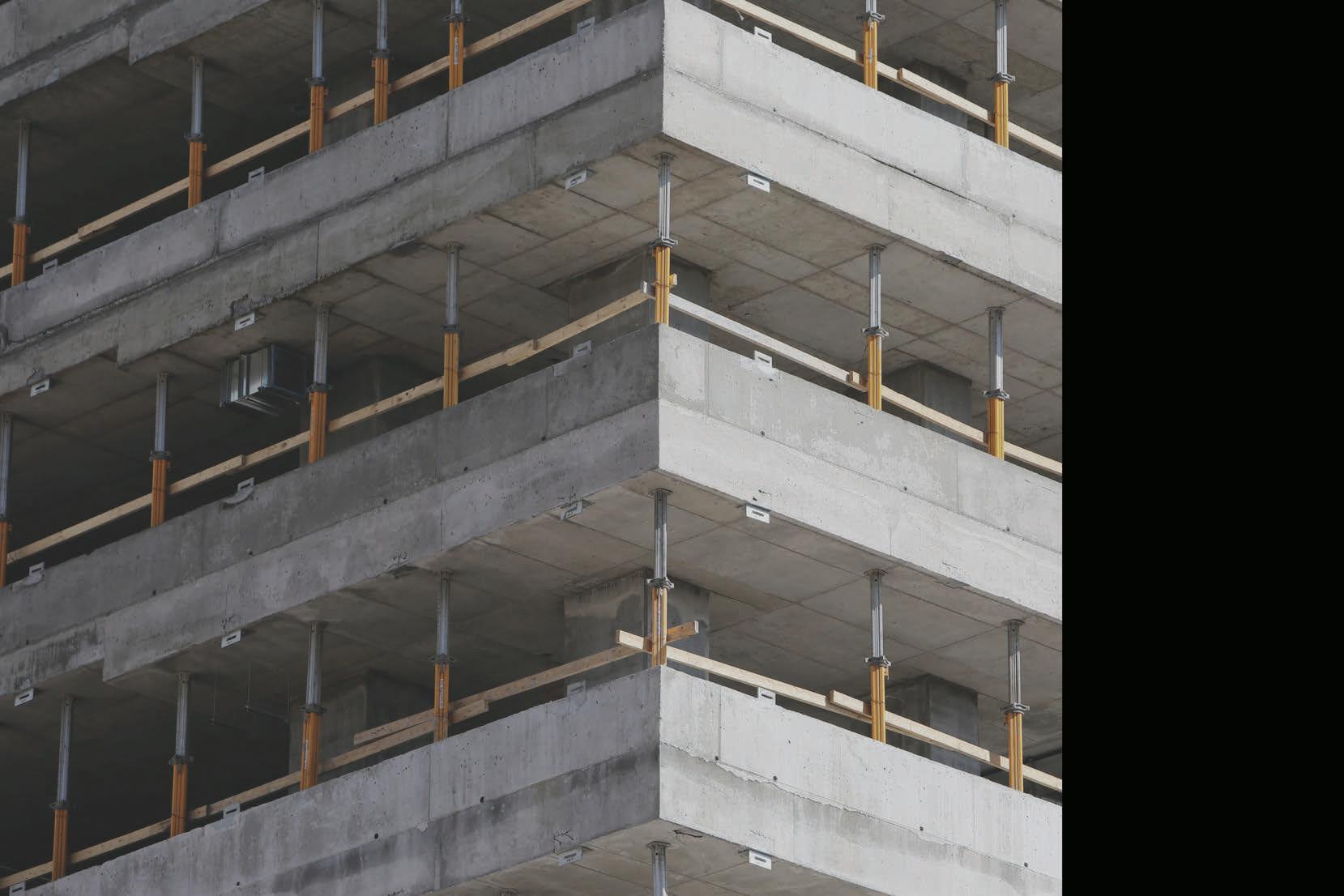
Modeling (BIM) is the next wave that is transforming the construction industry.
According to Construction Industry Development Board (CIDB) CEO Datuk Ahmad Asri Abdul Hamid, the BIM system could optimise a project’s cost in line with the Construction Industry Transformation Programme (CITP).
“The BIM system involves the development and management of building design information through the use of three-dimensional (3D) images and smart design information,”
Source; Bernama, 18/11/2016 Envisioning

Iwas greatly honoured to be selected as a Malaysian participant, along with Cik Nor Iratul of SIRIM STS, to the International Electrotechnical Commission (IEC)’s Young Professional Programme in Frankfurt in October, 2016. Malaysia is a member of IEC and every year, IEC organises the Young Professional Programme to give new, young talents the opportunity to participate in the global scale of Standards preparation.
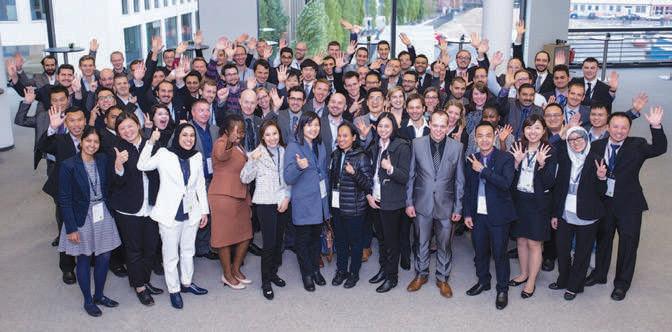
After a 20-hour journey, we arrived in Frankfurt on 9 October. The youth delegates from 43 countries were received by the host, Germany National IEC Committee, IEC President Dr Junji Nomura and other IEC ofice bearers.
The Young Professional Programme began the following day in the cold breeze of autumn, when Dr Nomura gave thePresidentialAddressinwhichhestressedtheimportance of having the young generation join the standardisation communities to generate new and fresh ideas in tackling the unpredictable future.
IEC Secretary and CEO Frans Vreeswijk later gave his perspective presentation on IEC roles and its current development. It is IEC’s intention to reinforce and expand the close relationship with the industry as the industry makes the greatest investment in the work, contributing time, money and expertise.
IEC introduced six Systems Evaluation Groups (Low Voltage Direct Current, Microgrids, Smart Manufacturing,
Active Assisted Living, Smarter Cities and Communities and Smart Energy) to engage the community of experts, identify the relevant stakeholders and deine the general architecture and boundaries of the problem to be addressed.
Head of Governance and Global Strategic Katharine Fraga shared the IEC Masterplan 2011 which incorporated vision, mission and long-term strategy for a 5-year duration. The new IEC Masterplan 2017, is currently in the drafting stage, and Young Professionals 2016 will have the chance to input fresh and creative ideas.
Ricardo Nava, one of the three 2015 Young Professional Leaders, talked about his involvement with and the beneits gained from the IEC. He encouraged Young Professionals to take chances and expose themselves for the positive possibilities from IEC.
Dennis Chew, IEC Regional Director for Asia-Paciic, talked on “What to expect in a Technical Meeting”. He


covered the complete process of the technical meeting. The technical meeting of IEC shares a similarity with our own MyENC’s Industry Standards Committees (ISC) of E and S.
The morning session ended with a Q&A session on IEC operations. The panellistswereMarkAmos(IECexBusinessManager),DennisChew,Katharine Fraga, Adam Murdoch (Manager of Equipment Safety, Energy Safe Victoria Australia)andMikeWood(GeneralManagerofEMEManagementEducation & Compliance, Telstra Operations Australia).
In the breakout session, we were separated into groups and we had to answer 4 questions from the Conformity Assessment Board (CAB) on current challenges faced within and without, potential partnership as well as possible improvement on the assessment method. These questions had no deinite answers and we were asked to give fresh and creative opinions from the young professional’s perspective. The results were presented to all IEC ofice bearers on the second day and I was among the 10 young professionals selected to present the ideas.
We then had a networking session with the Standardisation Management Board (SMB) as well as CAB. SMB manages and supervises the IEC’s Standard works while CAB manages and supervises the conformity assessment work. The board members were generally receptive and willing to answer related questions. I asked about the inancial stability of IEC and strategy to obtain and maintain it. The majority of funding comes from three sectors: Membership fees (based on the countries’ economic capacity as well as the electricity consumption), income from the standards sales and certiicate activities and sponsorship from industry and national committees.
Young Professionals were required to observe and learn from the SMB and CAB meetings. With my background and interest, I was fortunate to join SMB for further exposure. The meeting was chaired by IEC Vice President James Matthews and touched on aspects that included the collaboration with ISO, the yearly young professional outcome report and other businesses. This meeting coincided with a major and important event, where European Committee for Electrotechnical Standardisation (CENELEC) reconirmed its long-standing cooperation with IEC which lead to the signing of the Frankfurt Agreement.
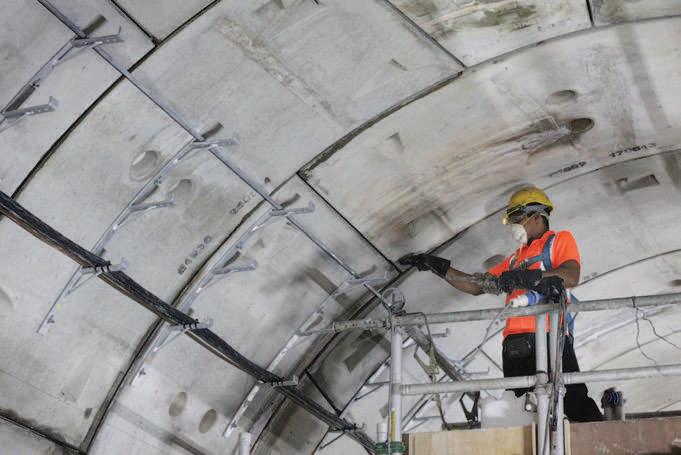
This was followed by a sharing session with Standardisation Manager Coebergh Van Den Braak, who emphasised on participating companies which brought strategic beneits. These companies have a broad and deep global outreach with representatives from 169 countries and IEC Standards and Conformity Assessment are widely accepted by regulatory and market authorities. With over 100 technical committees, the knowledge is there to be excavated as well as close co-operation with the ISO to enable different approaches by the companies. He ended by mentioning that without IEC, the world would not be a safe place.
The entire IEC communities, totalling 3,800+, which came to Frankfurt were invited to join the IEC Opening Ceremony. This showcased the unique Frankfurt culture as well as the technology of lasers and lighting for stage and performances. There, I met 7 other Malaysian delegates. I hope there will be more participants in future as, indirectly, this will show the world what Malaysia is capable of doing.
On the second day, there was a networking session with the National Committee of each country. Puan Ainal from Standards Malaysia, shared her knowledge and experience and we talked about how this programme could be duplicated back in Malaysia for the beneit of potential young professionals.
Next was Conformity Assessment by David Hanlon, Secretary of CAB, and Pierre Selva, Director for Conformity Assessment and Market Surveillance from Schneider Electric. Hanlon gave his view on conformity assessment and how it could bring healthy competition as well as level the playing ield for
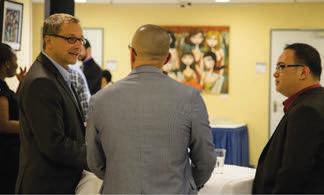
big manufacturers and small local manufacturers. He also shared how assessment was done.
As part of the programme, we had to attend and observe a Designated Technical Meeting slot; in my case, this was the chair of SC 23A (Cable Management System). Most of the delegates were from Europe and North America. The meeting was more on technical discussions and debates (even grammatical!) as well as using the vote to resolve any unsolved or disputed matter.
We were later engaged in an exciting Mock Technical Committee exercise led by Beer Opatsuwan (Network Substation Standards Engineer, Energex Limited Australia) to discuss Electronic Baby Robots as Standard Development Simulation Session. We were divided into 5 role-playing teams namely manufacturers, consumers, safety council, government and associations. I was part of the Safety Council, so automatically our nearest opponent was the Manufacturers. It might have been just a mock exercise but the learning curve was exponential!
Jack Sheldon, IEC Standardisation Strategy Manager, presented Section ahG 67 – Minute Trials (ahG stands for Ad Hoc Group) of the SMB 157th Meeting Report to Young Professional, being the initiatives from the Young Professionals Group.
Later, nine representatives of Young Professionals presented the results of the Day 1 discussions to the IEC oficials. I was impressed that they took our suggestions and ideas seriously. James Shannon, President-Elect of IEC personally thanked me for the presentation of ideas and encouraged me to continue working closely with the IEC.
The Young Professional Programme encouraged us to network with the IEC communities by extending the session from 7p.m. to 10p.m. 18 Technical Committee Chairs were there to take questions from the Young Professionals as well asthewiderIECcommunities.Ihadaninterestingdiscussion with members of TC 86 – Fibre Optics; the experts shared the latest technologies from around the world, from how ibre was spliced in the street of Paris to how data centres handled the high density of ibre connection in a single
rack! It was also announced that Park Chan-Kuen of South Korea was the Young Professional Leader for Asia. I would be working closely with Park to further discuss the potential of Asia for the IEC.
On the third day, there were interactive sessions where Young Professionals were required to attend to questions from IEC communities. I joined ISO/IEC JTC 1 (Information Technology) with the Convenor, Karen Higgingbottom, sharing the concern and future possibility faced by the Joint Technical Committee of ISO and IEC. As information technology is moving at a very high speed, ISO and IEC have some very strong challenges in terms of Standardisationaswellasprotectionandsafetyassurance to users. The JTC 1 posed questions regarding Security & Privacy, 3D Manufacturing & Customised Products as well as Robotics and AI. Karen took my opinions regarding Security & Privacy to submit for a JTC Review.
TheYoungProfessionalReinventionLabSessionwasthen initiated by Roland Bent. We were asked to provide inputs for the future IEC Masterplan which would be reviewed at the 2017 General Meeting in Vladivostok, Russia, before inalising into the blueprint of the Masterplan. Roland posed us challenges such as seeking new shareholders, relevant deliveries, think-tank in Market Strategy Board (MSB), Fora & Consortia Bridging and State of the Art Collaboration Process.
The Young Professional Programme ended with a visit to VDE (Association for Electrical, Electronics and Information Technologies) Testing Lab for Consumers’ Product. We witnessed Acoustic and Noise Emission Measurement, Ecodesign and Energy Eficiency, Electromagnetic compatibility (EMC), EMF, radio and Usability Tests labs. Cik Nor Iratul said that back in Malaysia, SIRIM has all these technologies and functions to do testing for consumer products. We were proud that Malaysia has the same level of technology as the VDE, Germany.
All those who attended the IEC Young Professional Frankfurt 2016, had gained tremendous knowledge and experience. I am suggesting that the previous IEM IEC Young Professionals – Ir. Yau Chau Fong (Tokyo, 2014), and Ir. Lee Cheng Pay (Minsk, 2015) – can, together with me, set up a working group under the EETD to promote Young Professional Malaysia perhaps be the leading working group for ASEAN. Hopefully, in the near future, Young Professional Malaysia will be the Young Professional Leader for Asia too!
Mr. Low Pek Jun has a Bachelor Degree in Telecommunication from Multimedia University, Malaysia. He is currently pursuing a Master Degree in Electrical Energy Management. He is a Data Center Engineer with NTT MSC, a subsidiary of NTT Communications, the world largest colocation/data centre provider. A member of IEM, he is the elected Committee Member of the Electrical Engineering Technical Division (EETD) for 2016/2017 term and lead for its Activities Portfolio.
The Institution of Engineers, Malaysia (IEM) is pleased to draw to the attention the following beneits and services for the members:
This special offer from CIMB for IEM where a rebate of 1% of the total monthly expenses accumulated from member cardholders expenses is credited back to IEM. Member are encouraged to sign up for the credit card or convert their existing credit card to the CIMB Afinity Card. Contribute towards IEM Funds by applying immediately
Annual Fee waiver
24,000
Members can enjoy the corporate rates provided by the hotels. List of hotels and Further details can be obtained in IEM website.
Members can enjoy a special rate for medical check-up.BP
Purchase or renew your insurance through IEM for the following;
Gallery* A free advertising platform for job seeker,
The fund serves to provide relief to members who are incapacitated by or suffering from hardship, sickness, age, accidentorotherinirmity(whetherbodilyormental)andwho are unable to pay for their own care.
√ Corporate discount of 6% off the nett selling price for all Audi models.
Corporate Membership – 10 % discount off all original Audi Genuine Accessories and merchandise.
Special invitations to Audi events and launches.
Corporate discount for brand new Mercedes
More details will be published in the website
Enjoy a healthy lifestyle by participating in the club’s activities which will be announce accordingly in the website.
As a platform for business networking, explore the potential of fellow engineers helping each other through business referrals to enhance and improve business income. Business referrals via friends and business colleagues has proven to be a powerful and effective marketing tool for effective business development.
Sub-Committee on Business Club *Subject to T&C.
Regular announcements and further details can be obtained at www.myiem.org.my
Thank you. Standing Committee on Welfare and Service Matters




by Ir. Shum Keng Yan
Ir. Shum Keng Yan is a chemical engineer and a certiied accident prevention and safety practitioner.

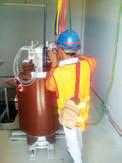




Before we look at the experience and exposure, let us irst deine the Competencies of a Safety Professional. These are the knowledge, skills and aptitude required to do the job. I will not go into the dissection of competencies into the Human Resources realm of semantics but instead, let us use a simpliied model. Let us divide the Competency into:
1. Functional Competency.
2. Core Competency.
1. FUNCTIONAL COMPETENCY
Functional Competency is by far the most familiar to a Safety Professional. This covers how well the Safety Professional can draw up and manage safety programmes, oversee risk management, apply risk assessment models, formulate safety intervention strategies and drive behavioural change, etc. The depth and scope depends on the job grade.
Functional Competency can be attained by attending a course followed by coaching and learning on the job. This will enable a person togainsuficientexperience.Thefunctionalcourseswillprovideacertain level of certiication. Think of Functional Competency as Technical Competency for a Safety Professional.
2. CORE COMPETENCY
Core Competency is usually deined as that which spans the organisation. This competency covers the soft skills and organisational agility of the Safety Professional. It is usually deined by the organisation as an expectation model or leadership model. This competency, though universal, is harder to develop as it requires more doing and coaching. Attending courses will only provide the concept. The real learning is in the doing.
Here is how we can add the competency portion into our Career Path.
Next we will look at the experience and exposure to develop the Safety Professional. Send your comments to: pub@iem.org.my.
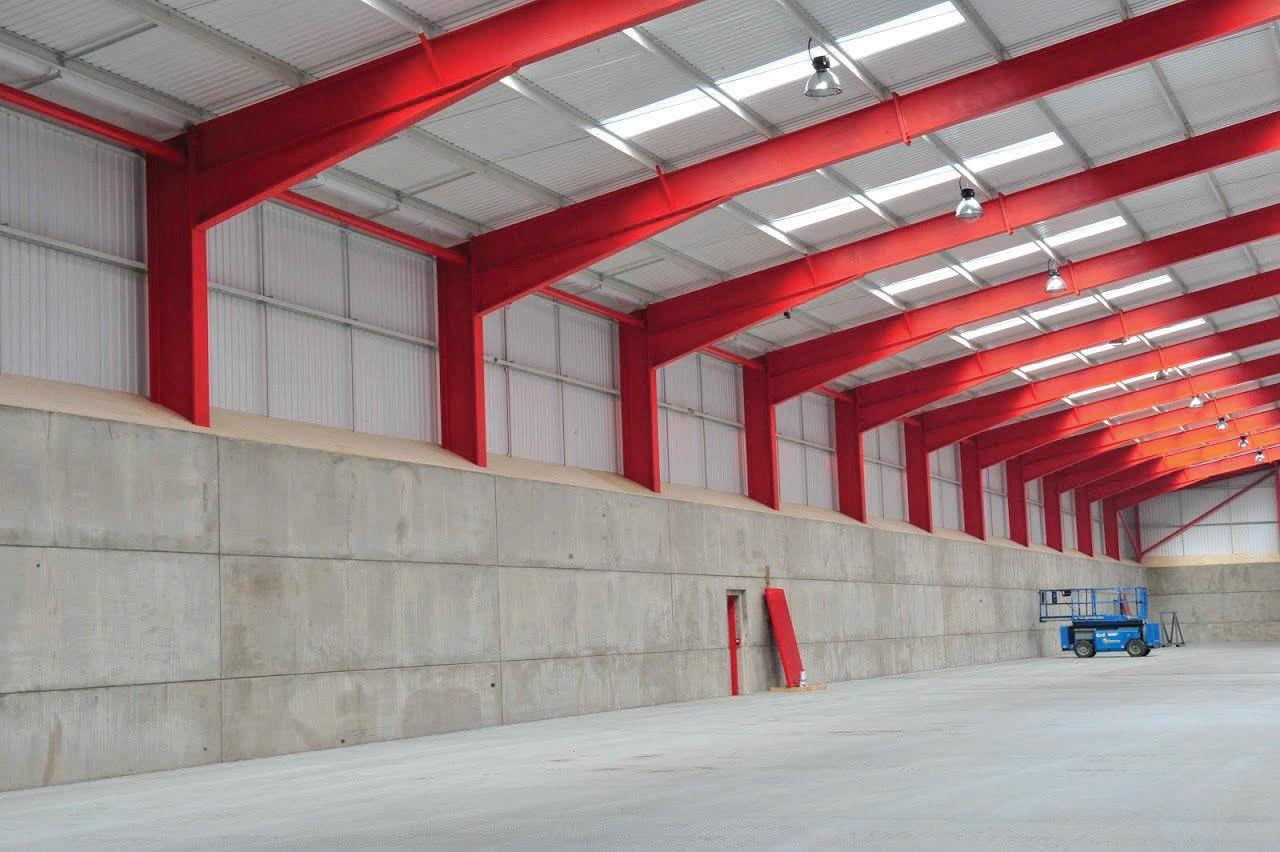











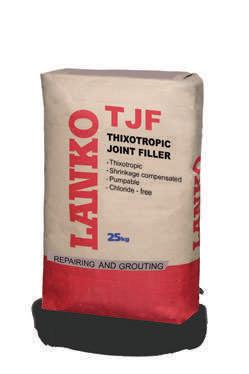



On 15 November 2016, IEM’s Electrical Engineering Technical Division (EETD) and Suruhanjaya Tenaga (Energy Commission Malaysia) jointly organised the “IEM-ST Awareness Half-Day Seminar on MEPS for Motors” in collaboration with International Copper Association (ICA). Some 100 participants from the industry and academic institutions attended the event at Best Western Hotel in Petaling Jaya.
IEM president Ir. Tan Yean Chin delivered the welcome address and then Suruhanjaya Tenaga (ST) Chief Executive Oficer (CEO) Datuk Ir. Ahmad Fauzi bin Hasan, who oficiated at the opening, said the aim of the seminar was to create awareness among the industry on the Minimum Energy Performance Standard (MEPS) guidelines for electric motors. Although the initial cost of high eficiency motors is high, the operating cost is lower in the long run as these motors have less energy wastage and will last longer
The irst topic, “Market Research Study on Opportunities for High Eficiency Motors (HEMs) in Malaysia Industries”, was presented by Ir. Assoc. Prof. Dr Gobbi Ramasamy from Multimedia University (MMU), Malaysia. The eficiency of electric motors can be categorised into the following IE (International Eficiency) classes: IE1 (Standard Eficiency), IE2 (High Eficiency), IE3 (Premium Eficiency), and IE4 (Super Premium Eficiency).
Some of the conclusions from Dr Gobbi’s HEMs market study in Malaysia are as below:
• The majority of local industries use IE1 electric motors.
• The top 5 industries that dominate use of electric motors are paper, cement, food & beverage, petrochemical and steel.
• Most companies opt for motor rewinding (even though therewillbeadropinmotoreficiency)asthisischeaper than buying a new HEM.
• There are no MEPS in place and this, coupled with the lack of enforcement, has contributed to the lack of interest in the purchase of HEMs.
Ir. Abdul Rahim bin Ibrahim of ST (Energy Commission) made the presentation on “Guideline on Minimum
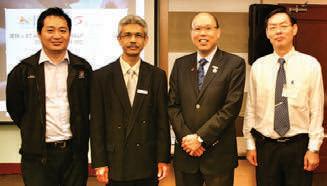

Energy Performance Standard (MEPS) for Electric Motors”. According to the guideline, the MEPS requirement shall be IE2 and motors with eficiency below the MEPS value should notbeused.Formotorcapacitywhichisnotcoveredunder Table 1, 2 and 3 as deined in MS 2578-3, the MEPS value of the motor shall refer to the next higher kW capacity.
Puan Zuaida Abdullah from Malaysian Investment Development Authority (MIDA) presented the topic, “Government Facilities and Incentives in Green Technology Sector”. There are 2 tax incentives for green activities
under the Green Technology Incentive, Income Tax Act, 1967: Investment Tax Allowance (ITA) and Income Tax Exemption (ITE).
Companies which undertake investments in speciic projectsthatpromotesustainabilityandgreenenvironment, are entitled for ITA, e.g. investment in energy eficient equipment such as HEMs. Companies that provide green services which support investments in green projects are entitled for ITE. There are also incentives given for the promotion of activities such as waste recycling and the use ofpromotedgreenproductsinbuildingmaterials,electrical & electronics, biomass and machinery & machinery equipment.
Title: Technical Visit to Cameron Highlands Sultan Idris (II) WOH Power Station (SSJ Cameron Highlands, TNB Generation Division, Tapah, Perak Darul Ridzuan)
13 February 2017
Organisedby :ElectricalEngineeringTechnical Division
Time :7.00a.m.-2.30p.m.
CPD/PDP :0
Title: 2-Day Course on ‘Contract Management for Construction Projects’
13-14 February 2017
Organisedby :ProjectManagementTechnical Division
Time :8.30a.m.-5.30p.m.
CPD/PDP :14
Title: 1-Day Course on Introduction to Demolition Using Explosives
15 February 2017
Organisedby :Oil,GasandMiningEngineering Technical Division
Time :8.30a.m.-5.00p.m.
CPD/PDP :6.5
Title: Half-Day Seminar on “The Deterioration of Concrete and Its Repair & Protection According to EN1504”
16 February 2017
Organisedby :CivilandStructuralEngineering Technical Division
Time :8.30a.m.-2.00p.m.
CPD/PDP :3.5
Title: 1-Day Course on “Effective Email Writing”
16 February 2017
Organisedby :Oil,GasandMiningEngineering Technical Division
Time :9.00a.m.-5.00p.m.
CPD/PDP :6.5
Kindly note that the scheduled events below are subject to change. Please visit the IEM website at www.myiem.org.my for more information on the upcoming events.

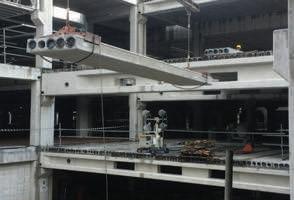


EASTERN PRETECH (MALAYSIA) SDN. BHD . 28, Jalan 7/108C,Taman Sungai Besi, 57100 Kuala Lumpur.
Tel: +603-7980 2728 Fax: +603-7980 5662 www.epmsb.com.my
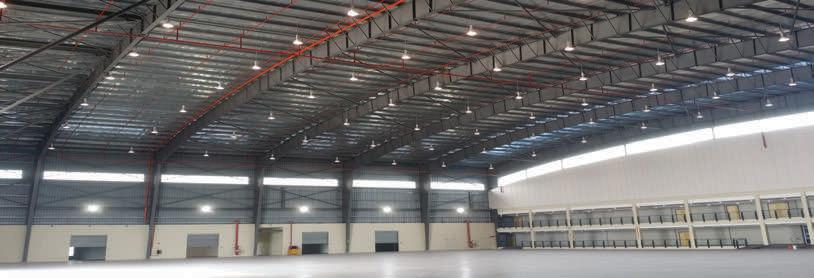
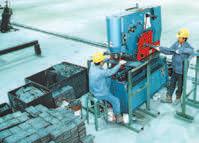

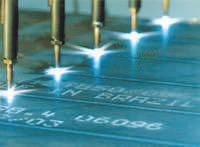

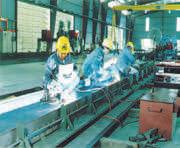

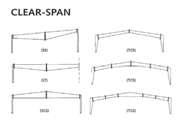

On 9 December, 2016, there was an evening talk on “Liquidated Damages Under Construction Contracts” at the TUS & C&S rooms, 2nd Floor, Wisma IEM.
The session, attended by 55 participants, started with Ir. Leon Weng Seng explaining what “Practical Completion” meant as it affected the Date of Certiicate of Practical Completion (CPC) of a contract. It signiied the end of Liquidated Damages (LD) if a Certiicate of NonCompletion (CNC) had been issued by the S.O.
In England, the imposition of a sum of money for late completion may amount to penalty instead of Liquidated Damages which is a genuine pre-estimate of the Employer’s loss where proof of loss is not required. However, this is not the case in Malaysia because all LDs are considered penalties and the court must determine reasonable compensation for the Employer. This provision is embodied in S75 Contracts Act 1950
In the famous Selva Kumar case, the Federal Court pronounced 2 kinds of contracts. For the irst class, where reasonable compensation is dificult to assess, proof of actual loss is not required. For the second class, proof is essential when assessment of reasonable compensation can be carried out with settled rules.
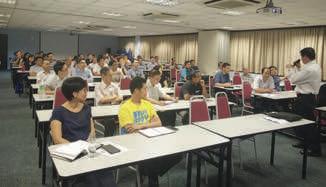
Ir. Leon highlighted the LD clauses in PAM, CIDB, IEM Forms of Contract. He also discussed situations where the LDs are rated “$ Nil”, “£ Nil”, “N/A”, “Zero” and the General Damages claimable in such cases. The defaulter can cite reasons such as Employer’s waiver, act of prevention, interference with certifying process, absence of trigger date for imposition of LD, extension of time and condition precedent, etc. as grounds for challenging the LD imposition.
Ir. Leon highlighted recent developments (November, 2015) in England on the concept of “legitimate commercial interest” and discussed at length 2 cases (ParkingEye Ltd v Beavis, and Cavendish Square Holding BV v Makdessi). There was active participation from the loor in the discussions and the talk ended at 7.30 p.m. with great applause for the speaker.
Title: IEM Forum on "Is Engineering Still Cool"
18 February 2017
Organisedby :IEMBusinessClub&Women Engineers Section
Time :9.00a.m.-1.30p.m.
CPD/PDP :0
Title: Talk on "The Emergent Vehicle Development Synergies In ASEAN: An Engineer’s Perspective of the Last 25 Years and Its Future Potentials”
21 February 2017
Organisedby :MechanicalEngineeringTechnical Division
Time :5.30p.m.-7.30p.m.
CPD/PDP :2
Kindly note that the scheduled events below are subject to change. Please visit the IEM website at www.myiem.org. my for more information on the upcoming events.
reported by

The Civil and Structural Engineering Technical Division (CSETD) of IEM organised a pre-AGM talk on “Temporary Works under BEM Guideline and MS1462 Metal Scaffolding – Mandatory under CIDB Act 520 (Amendment 2011)” on 23 July, 2016.
A total of 160 participants attended the talk which was presented by Ir. Tan Yean Chin, President of IEM (2016/2017) and Ir. Lee Kee Bau, committee member of the C&S Technical Division (2015/2016). Both are experienced practising engineers for temporary works in construction industry.
The irst session, “Temporary Works under BEM Guideline”, was presented by Ir. Tan. In the construction industry, the process involved in erecting the permanent works at site is classiied as temporary works. It is the norm that the contractor is responsible for the construction of the temporary work.
In BEM's Guidelines on the “Role and Responsibility for TemporaryWorksduringConstructionStage”,AProfessional

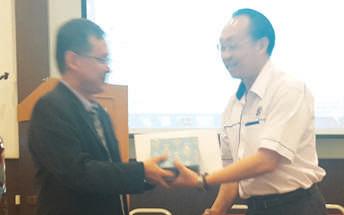
Engineer for Temporary Works (PETW) will be registered with BEM for a Practicing Certiicate. The contractor can employ a PETW to carry out the design, endorsement and supervision of temporary works that require a PE's certiication.
Also discussed were examples of temporary works in Class 1 (Minor Temporary Works), Class 2 (Major Temporary Works) and Class 3 (Temporary Works that form part of Permanent Works) according to BEM's guidelines. Ir. Tan then presented several cases of failure in temporary works designandconstructioninMalaysia,whichhadcausedthe death of construction workers or members of the public.
Safety in Temporary Works is very important and PETWs employed by the contractor must have adequate knowledge and experience in designing and supervising the construction of the Temporary Works.
Ir. Lee presented the second session of the talk on “MS1462 Metal Scaffolding – Mandatory under CIDB
Act 520 (Amendment 2011)”. The objectives of this talk were to promote awareness on the mandatory standard for scaffolding in our construction industry and to introduce Malaysian Standard MS1462 for metal scaffolding. The deinition of scaffolding vs. falsework and several examples of scaffolding, falsework failure and collapse were presented in the talk.
In Malaysia, the design of scaffolding has to comply with Malaysian Standard MS1462: Part 1 to Part 4 and “Factories and Machinery Act 1967 (Act 139) Part X (Scaffolds)”. Meanwhile, the design of falsework must comply with Standard of BS5975, BS EN 12812, BS EN 1065, BS5950 and “Factories and Machinery Act 1967 (Act 139) – Part III (Concrete Work)”. All the design calculation and drawings for the scaffolding and falsework must be endorsed by a Professional Engineer with Practising Certiication.
The erection and dismantling of scaffolding at site must be performed by qualiied or competent scaffolders registered with DOSH or JKKP. All the erected scaffolding must be inspected, recorded in the checklist and kept by the qualiied or competent scaffolders. Inspection of scaffolding must be carried out from time to time to avoid any unnecessary failure or accident.
A simple Q&A session was carried out at the end of the talk. Then, Ir. Hooi Wing Chuen from CSETD presented
Title: 1-Day Workshop on Competency Talent Management 23 February 2017
Organised by : Women Engineers Section Time : 8.30 a.m. - 5.00 p.m.
CPD/PDP : 0
Title: 1-Day Workshop on Programming for Engineers (Part 2) - Visual Studio Community IDE 25 February 2017
Organised by : Information and Communications Technology Special Interest Group Time : 9.00 a.m. - 5.30 p.m.
CPD/PDP : 7
Title: 2-Day Course on “Vertical Transportation Systems” 1-2 March 2017
Organised by : Mechanical Engineering Technical Division Time : 9.00 a.m. - 5.30 p.m.
CPD/PDP : 13
Kindly note that the scheduled events below are subject to change. Please visit the IEM website at www.myiem.org.






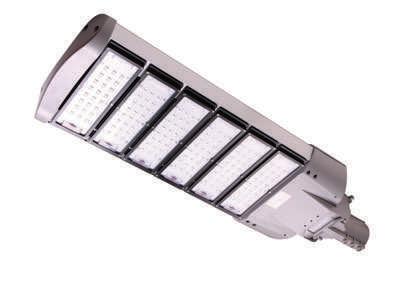

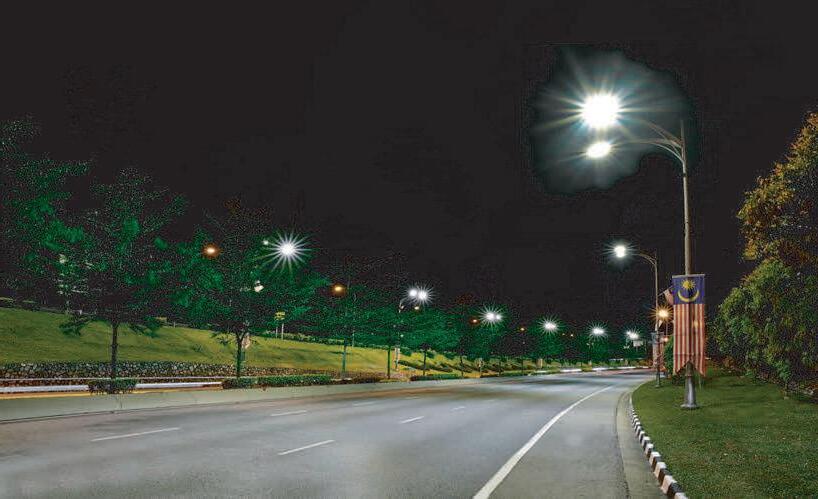







reported by

IEM eETD and IEEE Penang Joint Chapter (IEEE Penang) organised the IEEE-IEM eETD Mini Colloquium on 24 September, 2016, in EGC foyer, Penang Skills Development Centre (PSDC), Bayan Lepas, Penang.
IEEE Penang is the IEEE chapter in Penang afiliated to these technical societies: Electron Devices (ED), Microwave Theory and Techniques (MTT) and Solid-States Circuits (SSC).
The mini colloquium included talks by distinguished IEEE lecturers Dr Hideto Hidaka and Dr Makoto Ikeda as well as invited speaker Dr Alastair Trigg. It attracted 30 participants comprising mainly IEEE/IEM members and engineers working in electronics companies in Penang.
FIRST SPEAKER
Dr Hideto Hidaka, chief technology oficer and senior vice president of Renesas Electronics Corporation, delivered the talk on "Embedded lash memory: Technology, circuits to systems and MCU/SOC applications".
He shared the history of microcontroller (MCU) and its various applications, for instance automotive and cellular phone and explained the importance of embedded lash memory (eFlash) which enabled programmable instruction functions in MCU to support a consistent market growth.
He further elaborated on eFlash technology, architecture, circuits and sub-system design evolution and last, but not least, the application of eFlash in Internet of Thing (IOT). At the end of the talk, he answered questions from the participants who showed a keen interest in understanding the features of eFlash in IOT.
After lunch, Dr Makoto Ikeda, professor of electrical engineering and information systems at Tokyo University, delivered a talk on "Smart Image Sensors and applications to 3D range-inding".
First, he introduced the smart image sensor and 3D range-inding techniques and then elaborated on highspeed 3D range-inding techniques based on light-section methodlock-inpixel(1Dprojection),time-encodedpattern projection method (2D projection), lockin-pixel and singlephotonavalanchediode(SPAD)techniquesbasedontime of light (ToF) theory. He talked about application speciic integrated circuit (ASIC) of each technique which covered

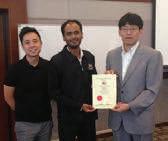

optimised device structure and circuits optimisation to maximise performance.
The last talk, "Packaging and Reliability for MEMS", was delivered by Dr Alastair Trigg who explained deinition of MEMS(micro-eletromechanicalsystem)andthetechnology of microscopic devices. MEMS devices have become ubiquitous in almost all aspects of our lives, particularly in the cars we drive and the phones we use.
Dr Trigg emphasised on packaging of MEMS integrated circuit(IC),akeypartoftheoveralldesignandfunctionality of the device, so that it will be more robust for delicate moving parts application. He highlighted packaging and reliability challenges, together with examples of solutions which enabled MEMS devices to play such an important role in our lives.
This was the irst time that IEEE Penang and eETD had co-organised the technical talk to support the professional development of engineers in the electronic industry.
reported by


The First Philippine Women Engineers Summit on September 23-24, 2016, was a historical moment for all ASEAN women engineers. The chairpersons of the various ASEAN women engineers institutions were invited to be keynote speakers at the event in Century Park Hotel, Manila. The theme was “Advancing Women Engineers’ Role in the ASEAN Community: A Sharper Focus”.
Here’s some food for thought on the outcome of the event: It is very apparent that women today are now living the dreams of those before us. We are empowered, we are acknowledged and recognised and now we are united more than ever. There must have been some time in our HISTORY that we wanted so much more, and now we are making “HERSTORY”.

We are empowered, we are acknowledged and recognised and now we are united more than ever. There must have been some time in our HISTORY that we wanted so much more and now we are making “HERSTORY”.
Gone are the days of wondering and wandering; we are now in the day and age of analysis, exploration, innovation, creativity, collaboration and making it all happen for us. Creating a wider network and a reliable support system will keep us moving forward and up, locally and internationally.
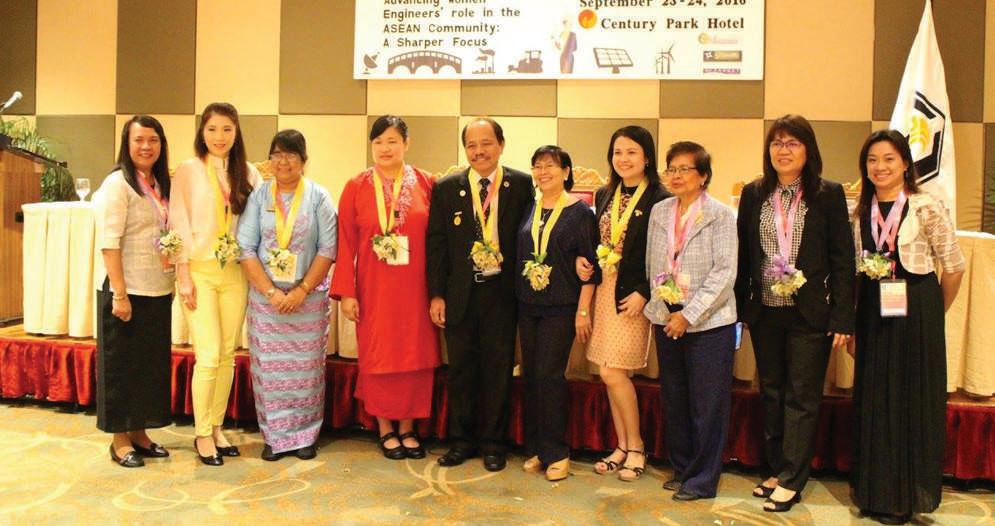


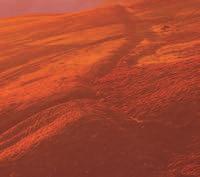

Prior to the event, the group composed of merely 15 Oficers and Trustees but an additional 162 members registered on the second day (this was not the irst though but this surely was the largest in number so far). With one or two meetings each month, multiple texts and email exchanges each day, the group was able to pull off an event that opened doors to many possibilities.
On the first half of Day One, focus was on the data, analysis and thoughts of Dr Leong Wai Yie, Secretary General of the WEAFEO and Chairman of the Women Engineers Section, Institution of Engineers Malaysia who presentedon“NetworkingandCollaborationOpportunities for Women Engineers in the ASEAN Region” while Dr Aura Matias Dean of the College of Engineering, UP Diliman, discussed “Global Women Leaders in Engineering Education”.
In the second part of the day, Dr Mu Mu Aye, Chairwoman of Myanmar Engineering Society, talked on “Professional Development of Women Engineers in the Academe”, followed by “A Glimpse into the Future of Engineering for ASEAN Women Engineers” by Dr Mel Palencia, the Chair of Chemical Engineering Department, Adamson University. Making the event more meaningful were the last two presenters for the day, DOST Undersecretary Dr Rowena Cristina L. Guevara, who discussed “Transforming Philippines into a Science Nation - A Call for Women Engineers in S&T” and Engr. Ermie L. Garon, President of Global-OFW, who shared her views on “Empowering Women Migrant Professionals in the ASEAN Community”.
On Day Two, Er. Emily Tan, Chair of Women Engineers Institution of Engineers Singapore, presented “Accelerating Empowerment of Women Engineers in the Private Sector” andDrCorazonClaudio,BoardofDirectors,Phil.Federation of S&T and Science Centrum Leaders, discussed “Women Engineers at the Forefront of Climate Change and Disaster Mitigation”. Last but not least, Engr. Praxedes Bernardo,
PRC-Board of Civil Engineering, spoke on “Technology Innovation for the 21st Century Women Engineers”. As an inaugural event, there were setbacks as well as successes. But most importantly, it was a milestone for women engineers. We are now looking forward to the Second Philippine Women Engineers Summit in September 2017.
Raspberry Pi is a small, single-board computer that is relatively inexpensive. It is a good device for testing InternetofThings(IOT)ideas.Itcanactasaweb-server, controller, door access system, surveillance camera and media centre. How you use it is up to your needs and imagination.
ICTSIG has donated two units of Raspberry Pi to the IEM library, together with a monitor, keyboard, mouse and the necessary SD cards. To use and test the Raspberry Pi, simply approach the librarian and request. You can also enquire about books which can give you a headstart.
Thank You.
Information and Communications Technology Special Interest Group (ICTSIG)
Title: 19th Annual General Meeting of the Information and Communications Technology Special Interest Group
4 March 2017
Organised by : Information and Communications Technology Special Interest Group Time : 11.00 a.m. - 1.00 p.m.
CPD/PDP : 2
Title: IEM Oficial Scarf Design Competition (Wisma IEM)
9 March 2017
Organised by : Standing Committee on Corporate Affairs & Women Engineers Section, IEM
Time : 8.30 a.m. - 5.00 p.m.
CPD/PDP : 0
Kindly note that the scheduled events below are subject to change. Please visit the IEM website at www.myiem.org. my for more information on the upcoming events.
Your equalizer to handle simple to complex jobs at an affordableprice

MULTI PURPOSE LICENSE KEY THAT PROVIDES A SINGLE USER ACCESS TO THE STAAD & RAM PRODUCT LINES.
Automatewind,notional & seismic loads with ease.
• BS 8110,BS 5950 2000, BS 5950 part 5, BS 5400 part 2 & part 3, BS 8007.
• EC-2,EC-3,EC-5,EC-8 –Includes various country annexes
• Malaysia Annex for EC-2 & EC-3 included, UBC, IBC &etc.
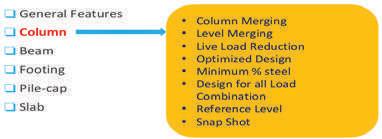
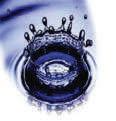
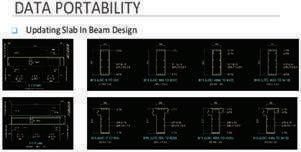
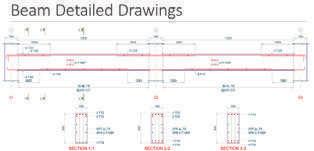
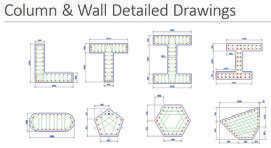
VR-CAM Technologies SdnBhd No 79, OG Business Park, TmnTan Yew Lai, 58200 Kuala Lumpur
Tel: (03)7782 8898, 7785 8898 Fax: (03)7782 6898
Web: http://www.vrctech.com Email: info@vrctech.com
S.Naren: 013-3477317 :Email: naren@vrctech.com Ruben : 017-8818893 : Email: rubenp@vrctech.com
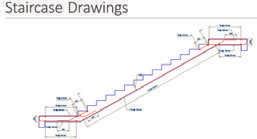
reported by




Two branches of The Institution of Engineers Malaysia held their second annual IEM Engineers’ Run last year.
The Sarawak Branch Graduate and Student Section organised the run on 11 September, 2016, in Kuching City in conjunction with the Engineer’s Week in Malaysia while the Young Engineers Section (YES) of the Southern Branch held it on 12 November, 2016, in Johor Bahru. The main objective was to promote the importance of exercise and health among engineers.
The Kuching run, with the theme “Bridging Our Society”, was also to introduce engineering, especially civil engineering, as a profession to the public. The organising committee comprised members of the Sarawak Branch Main Committee, YES and student chapters.
A total of 1,000 runners took part in this event held at Vivacity Megamall. All proceeds were channelled to the Sarawak Cancer Children’s Society (SCCS) which also held a week-long exhibition at the venue to raise awareness of the effects of cancer on children.
Oficiating at the 5km fun run at 6.30 a.m. was Cr. Wilfred Yap Yau Sin, who represented the Minister of Local Government, Senator Datuk Prof. Dr Sim Kui Hian, while Vivacity Megamall Managing Director Mr. Sim Yaw Hang lagged off the 10km event which had started earlier at
6a.m. The cut-off time for both runs was 1.5 hours and 2 hours respectively.
There were four categories for the 10km competitive run, namely 10km Engineer (Men), 10km Engineer (Women), 10km Open (Men) and 10km Open (Women). In 10km Engineer (Men) category, Tang Kwang Kuok walked away with irst prize, followed by Anthony Huang and Kueh Kwang Tai. Tan Lay Phin led the 10km Engineer (Women) category, followed by Vivian Lau and Nur Hawani Razak. For 10km Open (Men) category, Chong Yen Boon inished irst, followed by Ang Ming Chung and Sunny Jong Shi Xian. In the 10km Open (Women) category, Tang Sii Eng inished irst place, followed by Christabel Lim and Julia Yap Siew Yin.
All participants who inished the run within the cutoff times received inisher medals. The Top 10 for each category (except 5km fun run) received vouchers sponsored by Sushi Zanmai, Finisher T-Shirts and cash prizes. There was also a lucky draw session in which 13 runners walked away with various prizes including a one-month free pass from Phoenix Gym, hampers from Indocafe and smartphones from Digi.
IEM Sarawak Branch thanks the following sponsors for their contributions: VivaCity Megamall, Sarawak Energy Berhad, Sarawak Information Systems (SAINS), Alpha Survey
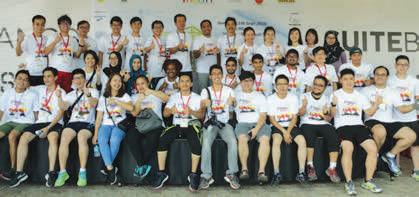
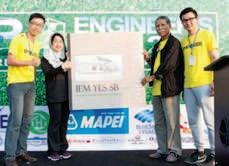
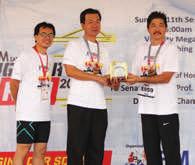
Consultant,GerbangMahawijayaSdn.Bhd.,IndocafeandDigi.Italsothanks its partners, including Brooks, Revive, Phoenix Gym, The Library, Komugi, Quiznoz Café, City Jogger’s Club, Rev Run Co, Moma Water and Mat Team Design.
Two months later in November 2016, the Young Engineers Section of IEM Southern Branch held the JB Engineer’s Run with the theme, "Go Green Run! GoSustainability!".Itsaimwasalsotopromoteengineeringasacareerandto enhance the good relationship between engineers and the public in Johor.
More than 1,200 engineers, students, their family members and friends took part in the event which started and ended at Austin Heights Water & Adventure Park, Johor Bahru. One week before the race, the entry packs of a navy blue colour dry-it T-shirt and a bib number, were distributed.
TheeventstartedwithaspeechbySouthernBranchViceChairmanIr.Haji Zainuddin bin Md. Ghazali, followed by the launching of the YES Photobook by the immediate past chairman, Ir. Assoc. Prof. Hayati binti Abdullah, and YES chairperson, Ng Pang Soon. Trainers with Anytime Fitness then led the crowd in a warm-up session before the 7km run was lagged off, followed by the 3km run 5 mins later.
All those who completed the run received a inisher’s medal, a certiicate and refreshments. A total of 60 prizes were given to the Top 15 runners in both categories. There were also 20 lucky draw prizes given away. Prizes were presented by the sponsors’ representatives. Sponsors included Hong Xin Construction S/B, MAPEI and NS BlueScope Lysaght Malaysia Sdn. Bhd.
Also set up were exhibition booths related to sustainability and green environment from UTHM IEM Student Section (Green Road Show, Tapir make from recycled material), UTM Robocon (Robotic) Team, Malaysian Nature Society and SWM Environment Sdn. Bhd. n
We are a supplier of high quality geosynthetic products used for soft soil stabilization, slope reinforcement, coastal erosion protection, river bank protection, landfills, drainage, road and railway construction.
Our Products: NEXTILE NON-WOVENS
NEXFORCE HIGH-STRENGTH WOVENS
NEXGRID GEOGRIDS
We also provide design, specification, bill of quantities, cost estimate and drawings free-of-charge.








Get in touch with us: Tel: 03-6142 6638 Fax: 03-6142 6693
sales@neusynthetics.com
Sales Team: Izwan (012-568 5611) Gordon (012-355 0872)



AIr. Chin Mee Poon
www.facebook.com/chinmeepoon
lberobello is a small town at the heel of the boot-shaped peninsula that makes up the bulk of Italy. My wife and I spent a night there and had a great time.
What attracted us to Alberobello were its many stone-houses. These are unique in that part of the world. The houses are typically cylindrical in plan, one-storey high and topped with a conical roof; the whole structure is made of stones piled up neatly without any cement mortar to bind them together. The Italians call such such a building trullo (plural trulli). In 1996, UNESCO listed the trulli of Alberobello as a World Heritage Site.
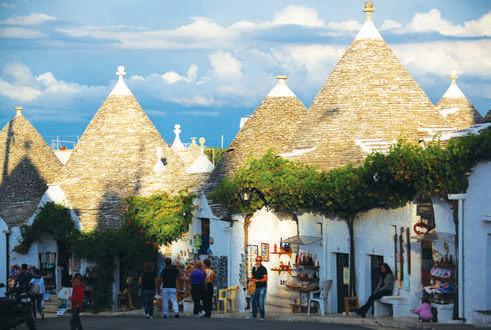
Most trulli in Alberobello were built in the second half of the 19th century and the irst half of the 20th century. Being constructed entirely of piled-up stones without binding cement mortar, the buildings were understandably small and were mainly dwellings for poor peasants. Some of them were used as stores.
Why was cement mortar not used to make the buildings more stable? Different historians came up with different explanations, the most laudable of which was that property tax was very high in the old days and well beyond the means of the poor peasants, so an uncemented stone building could be quickly pulled down should a tax inspector come around.
Almost all the original occupants of the trulli in Alberobello have moved to more spacious and comfortable
houses. The trulli that tourists see in Alberobello today have been converted to souvenir shops, cafes, restaurants or small lodging houses to satisfy curious tourists who want to experience a taste of life in a trullo. A few trulli have been abandoned and are in a derelict condition.
My wife and I travelled from Lecce to Alberobello by train. We emerged from the railway station without having made any reservation for accommodation, so we headed straight to the tourist information ofice for help, but it was closed. A good Samaritan brought us to Trullidea Resort, an agency for rooms in trulli, and the friendly lady there got us a trullo with a double bed, ensuite facilities and a kitchenette. It was
very nice and cosy and we liked it very much. It reminded us of our stay in a fairy chimney in Cappadocia in Turkey.

Wandering aimlessly amidst the trulli, the maze-like alleys gave us one pleasant surprise after another – a tastefully decorated little café, intricate artefacts on display in souvenir shops and even a church.
Yes, like many popular tourist destinations, Alberobello can be quite touristy during the peak travel season. It was good that we were there at the end of September, when it was possible to get away from the crowds and explore almost deserted nooks and corners of the trulli communes. This made our stay in that small town thoroughly enjoyable.
KepadaSemuaAhli,
Tarikh:11Januari2017
Berikut adalah senarai calon yang layak untuk menduduki TemudugaProfesionalbagitahun2017.
Mengikut Undang-Undang Kecil IEM, Seksyen 3.8, nama-nama seperi tersenarai berikut diterbitkan sebagai calon-calon yang layak untuk menjadi Ahli Insitusi, dengan syarat bahawa mereka lulusTemudugaProfesionaltahun2017.
Sekiranya terdapat Ahli Korporat yang mempunyai bantahan terhadap mana-mana calon yang didapai idak sesuai untuk menduduki Temuduga Profesional, surat bantahan boleh dikemukakan kepada Seiausaha Kehormat, IEM. Surat bantahan hendaklah dikemukakan sebulan dari tarikh penerbitan dikeluarkan.
Ir. Yam Teong Sian Seiausaha Kehormat, IEM,
PERMOHONAN BARU NamaKelayakan
KEJURUTERAAN AWAM
ANDING ANAK UNCHI BE HONS (UiTM) (CIVIL, 1996)
MSc (CURTIN) (PROJECT MANAGEMENT, 2013)
MOHAMMAD HIRIDDIN BIN HASHIMBE HONS (UTM) (CIVIL, 2006
ZAMSARI BIN MOHAMADBE HONS (MALAYA) (CIVIL, 1998)
NORAZZLINA BINTI M.SA'DON BE HONS (UNIMAS) (CIVIL, 2000)
MSc (WALES) (STRUCTURAL, 2004)
PhD (AUCKLAND) (CIVIL, 2012)
KEJURUTERAAN ELEKTRIKAL
RIJALUL FIKRI BIN TARMIZIBE HONS (UNITEN) (ELECTRICAL & ELECTRONICS, 2006)
KEJURUTERAAN ELEKTRONIK
YEOH KEAT HOEBE HONS (UTM) (ELECTRICALINSTRUMENTATION & CONTROL, 2005)
ME (MULTIMEDIA) (MICROELECTRONICS, 2010) PhD (MALAYA) (2014)
KEJURUTERAAN STRUKTUR
ABDUL RAZAK ABDUL KARIM BE HONS (UNIMAS) (CIVIL, 2000) MSc (WALES) (STRUCTURAL, 2004) PhD (AUCKLAND) (CIVIL, 2012) PERPINDAHAN AHLI No. Ahli NamaKelayakan
KEJURUTERAAN AWAM
41259 ABDUL RAZAK BIN ABDULAZIZ BE HONS (UTHM) (CIVIL, 2006)
48918LEE VOON HEE BE HONS (NEW SOUTH WALES) (CIVIL, 2009) MESc (NEW SOUTH WALES) (GEOTECHNICAL, 2009)
72631MUHAMMAD NAZRIN BIN RUSLAN BE HONS (UTM) (CIVIL, 2013)
29375 TAN KIEN YU BE HONS (UPM) (CIVIL, 2010)
42523CHEE CHENG HOEBE HONS (CURTIN) (CIVIL & CONSTRUCTION, 2009)
69524MOHD AZRAIN BIN MD. YAAKOBBE HONS (UNISEL) (CIVIL, 2007)
89629 NORDIANAAYU BINTI ABU ZARIN BE HONS (USM) (CIVIL, 2002)
KEJURUTERAAN ELEKTRIKAL
42514DAVENDRA KUMAR KALIAPPANBE HONS (UNITEN) (ELECTRICAL POWER, 2008)
27508ROLAND JULIUS @ GRAYBE HONS (UTM) (ELECTRICAL, 1991)
KEJURUTERAAN ELEKTRONIK
70424IRRAIVAN ELAMVAZUTHI BE HONS (UTM) (ELECTRICAL, 1989) PhD (SHEFFIELD) (2002)
KEJURUTERAAN PEMBUATAN
43839MOHD FATHULLAH BIN GHAZLI@GHAZALI BE HONS (IIUM) (MECHANICAL, 2006) MSc (COVENTRY) (2007) PhD (BRUNEL) (2016)
KEJURUTERAAN BAHAN
61150CHOO JERN YUE, EDWINBE HONS (LONDON) (MATERIAL, 2004)
KEJURUTERAAN STRUKTUR
50729WONG CHEE SWEE BE HONS (LEEDS) (CIVIL & STRUCTURAL, 2008) MSc (LEEDS) (STRUCTURAL, 2009)
KEJURUTERAAN PENGANGKUTAN
53832GOH BOON HOE BE HONS (UPM) (CIVIL, 2001) MSc (UPM) (HIGHWAY & TRANSPORT, 2005) POSTGRAD CERT (NOTTINGHAM) (2013)
KEJURUTERAAN SUMBER AIR
66686NUR ASMALIZA BINTI MOHD NOOR BE HONS (USM) (CIVIL, 2001) MSc (USM) (RIVER MANAGEMENT & URBAN DRAINAGE, 2010) PhD (UNITEN) (2015)
80784SITI FATIN BINTI MOHD. RAZALI BE HONS (UTM) (CIVIL, 2006) PhD (WESTERN AUSTRALIA) (2011)
KEJURUTERAAN MEKANIKAL
54336BEH JOO LEONGBE HONS (MULTIMEDIA) (MECHANICAL, 2011)
43795SHAYFULL ZAMREE BIN ABD. RAHIM BE HONS (UTM) (MECHANICAL, 2000) ME (UTM) (2006) PhD (UTM) (2015)
43929SYAZMIZAL BIN SALLEHBE HONS (UNITEN) (MECHANICAL, 2001)
24996MEGAT MOHD AMZARI BIN MEGAT MOHD ARIS BE HONS (UTHM) (MECHANICAL, 2007) ME (UPM) (MANUFACTURING SYSTEMS, 2011)
25463RAMZANULAZHIM BIN BORHANBE (MINNESOTA) (MECHANICAL, 2003)
PERMOHONAN BARU/PEMINDAHAN MENJADI AHLI KORPORAT
KEJURUTERAAN AWAM
LING SING EEKBE HONS (UTM) (CIVIL, 2006)
SENARAI PENDERMA KEPADA WISMA DANA BANGUNAN IEM
Institusi mengucapkan terima kasih kepada semua yang telah memberikan sumbangan kepada tabung Bangunan Wisma IEM. Ahli-ahli IEM dan pembaca yang ingin memberikan sumbangan boleh berbuat demikian dengan memuat turun borang di laman web IEM http://www.iem.org.my atau menghubungi secretariat di +603-7968 4001/5518 untuk maklumat lanjut. Senarai penyumbang untuk bulan Disember 2016 adalah seperti jadual di sebelah:
NO. NO. AHLI NAMA 151360ABDUL RAHIM BIN OSMAN 222447AHMAD KHAIRUL HAKIMIN BIN IBRAHIM 345812AMIR HASDI BIN FAUZI @ MAT RAWI 459052ARULHAIZAL BIN ADAM HAMZAH 526497CHEW OOI TECK 605111CHIA NYAN FATT 716048CHIN WUI HON 880584JAMALUDDIN BIN MAHMUD 933876KENNETH A/L SUNDARAJ 1055928LAU LEE SIAN 1120165LIM KEIN SENG 1215417M. SUGUMARAN A/L V. MUTHIAH 1324433MOHD THARMIZI BIN MOHD YUSOF 1410928NOR ASIAH BT. OTHMAN 1543183RUSNIDA BINTI TALIB 1671147SHABIR BIN AHSHRUP 1720928SYARUZMI KHALID 1810084TAIB BIN ABU BAKAR 1915194TAN CHUAN HO 2036838TE CHOON CHIAM 2140010TERRENCE SELVIN A/LABRAHAM PATTU 2287693V SARAVANA KUMAR A/L VEERIAH 2365245WAN FOO KEONG 2466769WILLIAM WERA LUKAM 2521423WOO CHUNG HING
Note: This is a continuation of the list PERMOHONAN MENJADI AHLI ‘COMPANION’ which was published on page 46 of the January 2017 issue.
79301TAN CHEE WEIB.E.HONS.(UTAR) (MECHATRONICS, 2015)
78471 KHAIRULANUAR B. KHOLIT
B.E.HONS.(IIUM) (MECHATRONICS, 2007)
79534LENG CHIOU HAURB.E.HONS.(UTAR) (MECHATRONICS, 2015)
79529 LOW CHEON YING
B.E.HONS.(UTAR) (MECHATRONICS, 2015)
79528LOW KOK CHIENB.E.HONS.(UTAR) (MECHATRONICS, 2015)
79508 WONG YI HONG
KEJURUTERAAN PETROLEUM
79024 SANG YEW NGIN
79406AMIR ISMAIL BIN BASIRON
79397AMIR SABIRIN BIN ABDULLAH
B.E.HONS.(UTAR) (MECHATRONICS, 2015)
78889 YA'AKOB BIN YUSOF B.E.HONS.(IIUM) (MECHATRONICS, 2007)
KEJURUTERAAN PEMBUATAN
79248 AHMAD TARMIZI BIN OTHMAN
79250KHADIJAH BINTI MOHAMED SABRI
79249MOHAMAD FADZLIN BIN MOHAMAD FARIK
78895MOHD ROHAIZAD BIN MOHD RAZALI
79261MOHD SHAHRULL BIN ABDULLAH
78408MOHZANI BIN MOKHTAR
KEJURUTERAAN PERTANIAN
79024 SANG YEW NGIN
B.E.HONS.(UITM) (MECHANICALMANUFACTURING, 2015)
B.E.HONS.(UITM) (MECHANICALMANUFACTURING, 2015)
B.E.HONS.(UITM) (MECHANICALMANUFACTURING, 2015)
B.E.HONS.(UTEM) (MANUFACTURINGMANUFACTURING MANAGEMENT, 2009)
B.E.HONS.(UNIMAP) (PRODUCT DESIGN, 2009)
B.E.HONS.(WARWICK) (MANUFACTURING, 1995)
B.E.HONS.(UPM) (AGRICULTURAL, 1997)
B.E.HONS.(UPM) (AGRICULTURAL, 1997)
B.E.HONS.(UITM)(OIL & GAS, 2015)
B.E.HONS.(UITM)(OIL & GAS, 2015)
79395ARDI BIN HUSSEINB.E.HONS.(UITM)(OIL & GAS, 2015)
79405 DANIELANTHONIUS ANAK JEFFREY ALI
79396FARAH SHAHIDAH BINTI ROSLI
79404MOHD RAHIQUE YASIN BIN KAMARUDDIN
79394MUHAMMAD FALIQ BIN TUKIMIN
79403MUHAMMAD NUR TAUFIQ BIN SHAMSUDDIN
79392 NOOR AZRIN BIN MOHD RASHIDI
79402 NOORULASFALIZA BINTI JAFAR
79393 NUR AISHA BINTI JALALUL SAYUTI
79401NUR HAFIZAH BINTI SAFARIN
79400 SITI AIZATUL ILLY BINTI KEMAT
79399SITI MADIHAH BINTI RAZALI
B.E.HONS.(UITM)(OIL & GAS, 2015)
B.E.HONS.(UITM)(OIL & GAS, 2015)
B.E.HONS.(UITM)(OIL & GAS, 2015)
B.E.HONS.(UITM)(OIL & GAS, 2015)
B.E.HONS.(UITM)(OIL & GAS, 2015)
B.E.HONS.(UITM)(OIL & GAS, 2015)
B.E.HONS.(UITM)(OIL & GAS, 2015)
B.E.HONS.(UITM)(OIL & GAS, 2015)
B.E.HONS.(UITM)(OIL & GAS, 2015)
B.E.HONS.(UITM)(OIL & GAS, 2015)
B.E.HONS.(UITM)(OIL & GAS, 2015)
79326SOW CHIA SHENB.SC.(ALBERTA) (PETROLEUM, 2011)
79398UMAR HAYAT BIN FADZULLAH
KEJURUTERAAN POLIMER
79327 ANG TZE KANG
B.E.HONS.(UITM)(OIL & GAS, 2015)
B.E.HONS.(USM) (POLYMER, 2006)
79008TAN SEAH GUANB.E.HONS.(USM) (POLYMER, 2009) P.HD.(USM)(POLYMER COMPOSITES, 2013)
KEJURUTERAAN TELEKOMUNIKASI
78893 MAS AMIRA BINTI ZUAL-KEPLI B.E.HONS.(MALAYA) (TELECOMMUNICATION, 2012)
PERMOHONAN MENJADI AHLI ‘INCORPORATED’ No. Ahli NamaKelayakan
KEJURUTERAAN ELEKTRONIK
80704VINUKUMAR LUCKOSEB.E.(MANOMANIAM SUNDARANAR) (ELECTRICAL & ELECTRONICS, 2003) M.E.(ANNA)(POWER ELECTRONICS & DRIVE, 2005)
KEJURUTERAAN MEKANIKAL
80546 KUMAR YOGEESH DODDAIAH B.E.(VISVESWARAIAH TECH.)(AUTOMOBILE, 2005) M.E.(BANGALORE) (MECHANICALMANUFACTURING SC. & ENRG., 2010)
KEJURUTERAAN METALLURGI
80545CHENG GUIPINGB.E.(ANHUI POLYTECH.) (METALLURGICAL, 1991) M.E.(HEFEI)(METAL MATERIAL & HEAT TREATMENT, 1994) P.HD.(NANYANG TECH.) (MATERIALS SC & ENRG., 2007)
Persidangan Majlis IEM yang ke-400 pada 18 Januari 2016 telah meluluskan sebanyak 1,237 ahli untuk permohonan baru dan permindahanahli.Berikutadalahsenaraiahlimengikutdisiplinkejuruteraan:
Ir. Yam Teong Sian Seiausaha Kehormat, Insitusi Jurutera Malaysia
PERMINDAHAN AHLI KEPADA AHLI FELLOW
No. Ahli NamaKelayakan
KEJURUTERAAN AWAM
6751GOH SOON BOONBE (NOVA SCOTIA) (CIVIL, 1981)
5267KUEH NGEE WEIBSC (CHENG KUNG) (CIVIL, 1978) ME (ASIAN INSTITUTE THAILAND) (GEOTECHNICAL, 1980)
7252TIONG NGO PUBSC HONS (CNAA-HATFIELD POLYTECHNIC) (CIVIL, 1982)
KEJURUTERAAN ELEKTRONIK
5986JEEWA VENGADASALAM BE HONS (UTM) (ELECTRICAL, 1979) ME (MALAYA) (2009)
PEMINDAHAN AHLI KEPADA AHLI KORPORAT
No. Ahli NamaKelayakan
KEJURUTERAAN ALAM SEKITAR
39594MOHD ABD HAFIZ BIN ZAKARIA BE HONS (UNIMAP) (ENVIRONMENTAL, 2010)
KEJURUTERAAN AWAM
48863ADLAN RAFHAN BIN BURAHAN BE HONS (UTM) (CIVIL, 2000)
27294ALAN LIM CHONG BENGBE HONS (USM) (CIVIL, 2009)
43548 CHIN KIT YEE BE HONS (CURTIN) (CIVIL & CONSTRUCTION, 2009)
29106CHOW WAN HANBE HONS (UNITEN) (CIVIL, 2004)
42042EDDY MOHD FAIRUZ BIN YUSSLEE BE HONS (UNISEL) (CIVIL, 2008)
21977EVELYN PIUSBE HONS (THE CATHOLIC UNI OF AMERICA) (CIVIL, 1988)
21222 GAN CHENG TI BE HONS (MALAYA) (CIVIL, 2002)
24189 GUNASINGAN A/L VEERASINGAM BE HONS (UTM) (CIVIL, 1997)
25807 HIEW SI TIEN BE HONS (UNIMAS) (CIVIL, 45322JERRY BETIE CHIN TIMOTHY ASSON BE HONS (UITM) (CIVIL, 2007)
38015 KHAIRULAMRI BIN SANUSI BE HONS (UITM) (CIVIL, 2005)
27402 LEE CHON YEE BE HONS (USM) (CIVIL, 2008)
20977 LEE YING YU BE HONS (UTM) (CIVIL, 2005)
49578LIEW MING HUIBE HONS (UTM) (CIVIL, 2006)
66737 LIM YAO SHENG BE HONS (UKM) (CIVIL & STRUCTURAL, 2009)
56466LUQMAN BIN ISMAILBE HONS (UNITEN) (CIVIL, 2007)
36875MOHD ALI BIN ISMAILBE HONS (UTM) (CIVIL, 2002)
23843MOHD FADZIR BIN AHMAD BE HONS (UITM) (CIVIL, 2002)
27893 MOHD ZULHAM AFFANDI BIN MOHD ZAHID BE HONS (USM) (CIVIL, 2012)
66732 NAZRI BIN ABDUL RAHMAN BE HONS (UTM) (CIVIL, 2002)
78073 NG SHENG YEONG BE HONS (TASMANIA) (CIVIL, 2008)
37923NOOR WAHYU BINTI NGADIMIN BE HONS (UPM) (CIVIL, 2003)
49415 POR TEONG HOOI BE HONS (UTM) (CIVIL, 2007)
28263 SIA SOON YII BE HONS (USM) (CIVIL, 2009)
43519TAN CHEE HOONGBE HONS (UM) (CIVIL, 2008)
53750TAY CHEN CHUANBE HONS (SWINBURNE) (CIVIL, 2011)
38731 THILAPPAN A/L SUBRAMANIAM BE HONS (UTHM) (CIVIL, 2006)
39045 TONY KISMOOR ANAK SASAK BE HONS (UNIMAS) (CIVIL, 2006)
KEJURUTERAAN BAHAN
51701 WONG YEW HOONG BE HONS (USM) (MATERIAL, 2009)
KEJURUTERAAN BIOPERUBATAN
23071 SHAMILAARIARATNAM BE HONS (UPM) (ELECTRICAL & ELECTRONIC, 2000)
KEJURUTERAAN ELEKTRIKAL
61960AMIR HAMSAH BIN ARIFIN BE HONS (UTHM) (CIVIL, 2011)
49948 ANANTHA RAO A/L RAMARAO BE HONS (UTP) (ELECTRICAL & ELECTRONICS, 2009)
37832ARULNATHAN GYNASEGARAN BE HONS (UNITEN) (ELECTRICAL & ELECTRONICS, 2010) ME (UNITEN) (ELECTRICAL, 2015)
44149 AZRI ADI BIN ARBAI BE HONS (UITM) (ELECTRICAL, 2007)
16715CHENG KEE WAYBSC (TOLEDO UNI.) (ELECTRICAL, 1994)
43203CHIEN HUI LIANGBE HONS (CURTIN) (ELECTRICAL POWER, 2009)
59978 ERICHRAJAA/L MUNIANDY BE HONS (NORTHUMBRIA) (ELECTRICAL &ELECTRONIC, 2000) MSC (UCSI) (ELECTRICAL, 2012)
53756FONG SEIK FOOBE HONS (UNITEN) (ELECTRICAL & ELECTRONICS, 2008)
29336 GANAESAN TEVADASIN BE HONS (UMP) (ELECTRICAL - POWER SYSTEMS, 2010) ME (MALAYA) (POWER SYSTEM, 2013)
61906KAMARULZAMAN BIN MOHD DAHARI BE HONS (UTM) (ELECTRICAL, 2003)
37057 KHAIRULAZAD BIN AZMI BE HONS (UNITEN) (ELECTRICAL, 2005)
39054KONG KOK KHEONGBE HONS (UNITEN) (ELECTRICAL POWER, 2006)
44029KUAN JEW XUNBE HONS (UTAR) (ELECTRICAL & ELECTRONIC, 2011)
26403 LAU HENG TIEN BE HONS (UNITEN) (ELECTRICAL POWER, 2005)
43533 LIM YI YI BE HONS (UNITEN) (ELECTRICAL & ELECTRONICS, 2009)
78075 LING YANG MING BE HONS (WALES) (ELECTRONIC & ELECTRICAL, 2003) MSC (UMIST) (ELECTRICAL POWER, 2004)
70215MAHENDRAN JAGANATHAN BE HONS (UNITEN) (ELECTRICAL & ELECTRONICS, 2002)
37061MOHD SHARIL BIN SHAHARI BE HONS (UITM) (ELECTRICAL, 2008)
59955MOO KEN JOONBE HONS (MONASH) (ELECTRICAL & COMPUTER SYSTEMS, 2008) ME (UNITEN) (ELECTRICAL, 2012)
64730MUHAMMAD HAFIZ BIN AZIZAN BE HONS (UITM) (ELECTRICAL, 2008)
49922 NORULAMRAN BIN AHMAD BE HONS (UNITEN) (ELECTRICAL POWER, 2003)
44592RAM VIKRAM GANESH S/O RAM SING BE HONS (UNITEN) (ELETCRICAL POWER, 2007) ME (MALAYA) (2009)
49627RAYMOND CHOW WAI KEONG BE HONS (NORTHUMBRIA) (ELECTRICAL, 2006)
64552SHAHARUDDIN BIN MD. LIAS BE HONS (UTM) (ELECTRICAL, 2002)
54221 SUGUNESAN A/L GUNALAN BE HONS (UNITEN) (ELECTRICAL POWER, 2009)
37277 THEE TEONG HONG BE HONS (UTM) (ELECTRICAL, 2007)
50192WAN FAMY AZLI BIN WAN AHMAD BE HONS (UITM) (ELECTRICAL, 2008)
51267ZAFIRAH BINTI ZULKIFLIBE HONS (UNITEN) (ELECTRICAL & ELECTRONICS, 2009)
27979ZAILINI BINTI MOHD ALIBSC (HANYANG UNI, SEOUL) (ELECT, 1989)
KEJURUTERAAN ELEKTRONIK
38343 IRHAN BIN AMRAN BE HONS (UTM) (ELECTRICALELECTRONICS, 2006)
21239MOHAMMAD JUANI BIN SUJANA BE HONS (UTM) (ELECTRICAL, 1994)
24495 MUHAMMAD AKMAL BIN ABDULLAH BE HONS (ROYAL MELBOURNE) (ELECTRICAL, 1999)
38025NURUL HAZLINA BINTI NOORDIN BE HONS (USM) (ELECTRICAL & ELECTRONIC, 2002) MSC (USM) (ELECTRICAL & ELACTRONIC, 2005) PHD (EDINBURGH) (2013)
47049 VIJAY A/LARUMUGAM BE HONS (UNITEN) (ELECTRICAL & ELECTRONICS, 2007)
24521WONG GOON WENGBE HONS (MULTIMEDIA UNI) (ELECTRONIC, 2002) ME (UTM) (ELECT - ELECTRONIC & TELECOMMUNICATION, 2008)
KEJURUTERAAN GEOTEKNIKAL
20876GUE CHANG SHIN BE HONS (CIVIL, 2003) MSC (LONDON) (SOIL MECHANICS, 2004) PHD (CAMBRIDGE) (2012)
KEJURUTERAAN KIMIA
66123 MOHD AZHAR BIN ABDUL RAZAK BE HONS (UKM) (CHEMICAL, 2002)
16559TEOH BOON LAIBE HONS (UTM) (CHEMICAL, 1998)
58052THINAKARAN VADIVELOO BE HONS (UMS) (CHEMICAL, 2007)
KEJURUTERAAN MEKANIKAL
21995ABD. HALIM BIN ITHNINBE HONS (UITM) (MECHANICAL, 2002)
38745AHMAD NAZIR BIN KAMARUDDIN BE HONS (UTM) (MECHANICALAERONAUTICS, 2001)
24487CHIA HON KIATBE HONS (UKM) (MECHANICAL, 2002)
75147DAVENDREN VEREYABE HONS (UNITEN) (MECHANICAL, 2007)
14254FADIL BIN IBRAHIMADV DIP (UITM) (MECHANICAL, 1994)
52542 GOH YUEN PHANG BE HONS (MALAYA) (MECHANICAL, 2007)
73091HAMIDI BIN ABD HAMIDBE HONS (UNISEL) (MECHANICAL, 2009)
26140JAMILUDDIN BIN JAAFARBE HONS (UTM) (MECHANICAL, 2005) ME (UPM) (MANUFACTURING SYSTEMS, 2013)
50720JEYACHANDRAN BARNABAS A/L G.JESUDASON BE HONS (UTM) (MECHANICAL, 1995)
29253LEE CHOO MOUBE HONS (LIVERPOOL JOHN MOORES) (MECHANICAL & MANUFACTURING, 2005)
52543 LIEW LUI YUE BE HONS (MALAYA) (MECHANICAL, 2007)
43794 MAHESVARAN A/L PAMUSAMY BE HONS (UTM) (MECHANICAL, 2006)
41283MOHAMAD FARIZ BIN MOHAMED NASIR BE HONS (UTM) (MECHANICAL, 2006)
41976MOHAMMAD MAZMASHAHRIL BIN MAZLAN BE HONS (MINNESOTA) (MECHANICAL, 2005)
71129MOHD FAHMEE BIN NE'MAN BE HONS (IUTORLEANS) (MECHANICAL, 2006)
43689RAZALI BIN HASSANBE HONS (UPM) (MECHANICAL/SYSTEM, 1989)
KEJURUTERAAN STRUKTURAL
25664LIM CHAIN CHUANMSC (NATIONAL UNI OF SINGAPORE) (CIVIL, 2004)
KEJURUTERAAN TELEKOMUNIKASI
79009 RAYMOND CHANG TZIN BE HONS (CURTIN) (ELECTRONIC & COMMUNICATION, 2009) MSC (CURTIN) (ELECTRICAL, 2010)
PERMOHONAN MENJADI
AHLI KORPORAT
NamaKelayakan
KEJURUTERAAN AWAM
AB. QAHAR BIN OSMANBSC (GLASGOW) (1986)
ELYA SHUHAIRA BINTI
SHAFIE BE HONS (UTM) (CIVIL, 2007)
ENG BOON CHENGBE HONS (UTM) (CIVIL, 2002)
FARIHAH BINTI MOHD
THALHA BE HONS (UITM) (CIVIL, 2005)
GOH WEI HONGBE HONS (UTM) (CIVIL, 2003)
HOR KOK SYNN, ERICBE HONS (PORTSMOUTH) (CIVIL, 1999)
HUANG ZEE MENGBE HONS (MALAYA) (CIVIL, 1996)
MOHD RIDUAN BIN CHE
MUSA BE HONS (UTM) (CIVIL, 2003)
MOHD YAZID BIN
ABDULLAH BE HONS (UTM) (CIVIL, 1981)
MUHAMAD SYAKIR BIN
MAHI DIN BE HONS (UTM) (CIVIL, 2003)
NIK RULAZMAN BIN NIK
MOHD ROSDY BE HONS (UITM) (CIVIL, 1995)
NORHISHAM BIN NORDIN BE HONS (UTM) (CIVIL, 2001)
NORISHAM BIN ABDUL
TALIB BE HONS (UPM) (CIVIL, 1999)
SEK FOOK MENGBE HONS (RMIT) (CIVIL, 1990)
SHAIFUL EZAN BIN
OMAR BE HONS (UPM) (CIVIL, 2002)
WONG HOI WAYBE HONS (USM) (CIVIL, 2002)
WONG SIONG ING, RITA BE HONS (UTM) (CIVIL, 2005) MSC (NATIONAL UNIVERSITY OF SINGAPORE) (CIVIL, 2011)
YOUL HYDELL BIN
ABDUL RAHMAN BE HONS (UITM) (CIVIL, 2001)
ZALEHA BINTI JAMBULBE HONS (UITM) (CIVIL, 2007)
KEJURUTERAAN BIOPERUBATAN
SASIKALA DEVI THANGAVELU BE HONS (UTM) (ELECTRICAL, 1983) MSC (KEELE) (BIOMEDICAL, 2004)
KEJURUTERAAN ELEKTRIKAL
AZEAN BINTI ABU SAMAD BSC (SOUTHERN CALIFORNIA) (ELECTRICAL, 2001)
CHIONG CHING PINGBE HONS (CURTIN) (ELECTRICAL, 2007)
LO THUAN KAI BE HONS (CURTIN) (ELECTRICAL, 2007)
MASLIZA MD. NOAHBE HONS (UTM) (INSTRUMENTATION & CONTROL, 1997)
MOHD AIZAM TALIB BE HONS (PORTSMOUTH) (ELECTRONIC & ELECTRICAL, 1997) ME (UNITEN) (2002)
MOHD RIZAL BIN RAMLAN BE HONS (UTM) (ELECTRICAL, 1997)
MUHAMMAD AZMEE BIN RIFIN BE HONS (UITM) (ELECTRICAL, 2009)
MUHAMMAD KHUZAIFAH BIN HASSAN BE HONS (UTM) (ELECTRICALINSTRUMENTATION & CONTROL, 2005)
RAMAMUTHE A/L NARAYANAN BSC (SOUTH DAKOTA STATE) (ELECTRICAL, 1994)
SHURIATY BINTI SHAFIEBE HONS (UTM) (ELECTRICAL, 2000)
YUSMIR YUSOP BE HONS (UNITEN) (ELECTRICAL POWER, 2009)
KEJURUTERAAN ELEKTRONIK
ADDIE IRAWAN HASHIMBE HONS (USM) (ELECTRIC & ELECTRONIC, 2002)
ADUWATI BINTI SALIBE HONS (EDINBURGH) (ELECTRONICS (NETWORK, 2002) MSC (UPM) (COMMUNICATIONS & NETWORK, 2002) PHD (SURREY) (2009)
NORSHAMSURI BIN ALI @ HASIM BE HONS (UNITEN) (ELECTRICAL & ELECTORNICS, 2002) MSC (UPM) (COMMUNICATION & NETWORKS, 2006) PHD (CAMERINO. ITALY)(SCIENCE & TECH, 2014)
YASNUL BIN YAHYA BE HONS (SURREY) (ELECTRONIC, 2003)
KEJURUTERAAN KIMIA
AHMAD ZAIDI BIN MD DIN BE HONS (USM) (CHEMICAL, 1998)
KEJURUTERAAN MEKANIKAL
AZIZOL BIN
KAMARUDDIN BE HONS (MALAYA) (MECHANICAL, 1985)
AZREEN FARIZ BIN
MOHD DARON BE HONS (UNITEN) (MECHANICAL, 2002)
ISMI BIN MOHAMEDBE HONS (UTM) (MECHANICAL, 2009)
LEE KAO CHOONDIP ING (WURTTEMBERG) (MECHANICAL, 2008)
MOHD ZULFADLI BIN
MOHD ZAFRI BE HONS (UTHM) (MECHANICAL, 2008)
SHAFREEN BIN SAHWEE BE HONS (UTHM) (MECHANICAL, 2007)
WAZIYATI BINTI RAMLIBE HONS (UITM) (MECHANICAL, 2002)
KEJURUTERAAN MINERAL
MOHD NAZRI BIN SALLEH BE HONS (USM) (MINERAL, 2006)
KEJURUTERAAN PENGANGKUTAN
MOHD RAWAWI BIN AWANG NGAH BE HONS (UTM) (CIVIL, 2003)
KEJURUTERAAN PERTANIAN
NORBAITI BIN JARABEBE HONS (UPM) (BIOLOGY & AGRICULTURAL, 2003)
KEJURUTERAAN SUMBER AIR
EDNA MATTHEW RUJIBE HONS (USM) (CIVIL, 1999)
KEJURUTERAAN TELEKOMUNIKASI
MAS LEESADEWI BINTI MOHD ALI BE HONS (UNITEN) (ELECTRICAL & ELECTRONICS, 2006)
LULUS PPP (BEM)
KEJURUTERAAN AWAM
AHMAD DANIAL RIDWAN BIN MOHAMAD BOLHAIR BE HONS (UNISEL) (CIVIL, 2008)
DAYANG
SHERRYLSUSILA BT AWANG SHARKAWI BE HONS (UKM) (CIVIL & STRUCTURAL, 2001)
JOSEPH TANG LON MOOD BE HONS (UNIMAS) (CIVIL, 1999)
MOHAMAD FARID B. ROSLI BE HONS (UITM) (CIVIL, 2008)
MOHD FAIZ BIN MOHD FAUDZI BE HONS (UITM) (CIVIL, 2007)

MOHD FIRDAUS BIN BARJUMIN BE HONS (UITM) (CIVIL, 2008) MSC (UITM) (STRUCTURAL, 2013)
SHAMSUL BAHRIN BIN HARUN BSC (TOLEDO) (CIVIL, 1985)
KEJURUTERAAN ELEKTRIKAL
CHEN YAU THONG BE HONS (UTM) (ELECTRICAL, 2002)
CHOW KOK HOUBE HONS (MALAYA) (ELECTRICAL, 2008)
JAIS BIN ISMAILBE HONS (UMIST) (ELECTRICAL & ELECTRONIC, 1997)
MOHD EZWAN BIN MOHAMAD RAMLI BE HONS (UTM) (ELECTRICAL, 2010)
VIJAI ANANTH S/O SETHUPATHI BE HONS (UNITEN) (ELECTRICAL & ELECTRONICS, 2007)
KEJURUTERAAN ELEKTRONIK
KUMARAVELOO S/O MARIMUTHU BE HONS (NORTHUMBRIA) (ELECTRICAL & ELECTRONIC, 1997)
KEJURUTERAAN KAWALAN & INSTRUMENTASI
ANAS BIN ABD RAHMANBE HONS (UTM) (ELECTRICALINSTRUMENTATION & CONTROL, 2009)
KEJURUTERAAN KIMIA
FREDDY TEO WEE TECK BE HONS (UTP) (CHEMICAL, 2007)
SAIFULANUAR BIN MOHD MOKHTAR BE HONS (UTP) (CHEMICAL, 2003)
KEJURUTERAAN MEKANIKAL NAZRI BIN TALIB BE HONS (UTM) (MECHANICAL, 2005)
PEMINDAHAN KEPADA ‘COMPANION’ No. Ahli NamaKelayakan
KEJURUTERAAN AWAM 17744MOHD HAMDI BIN SIDIKB.E.HONS.(ITM)(CIVIL, 1999)
PERMOHONAN MENJADI AHLI ‘COMPANION’ No. Ahli NamaKelayakan
KEJURUTERAAN AWAM
84919DR. FARADIELLA BINTI MOHD KUSIN B.E.HONS.(UTM) (CIVIL, 2006)
M.E.(CIVILENVIRONMENTAL MANAGEMENT, 2007)
P.HD.(NEWCASTLE UPON TYNE)(SCIENCE, AGRICULTURE & ENRG., 2011)
Note: Remaining list of the Permohonan Menjadi Ahli ‘Companion’, Pemindahan Kepada Ahli Siswazah, Permohonan Menjadi Ahli Siswazah, Permohonan Menjadi Ahli ‘Incorporated’, Permohonan Menjadi Ahli ‘Afiliate’, Permohonan Menjadi Ahli ‘Associate’ would be published in the March 2017 issue. For the list of approved “ADMISSION TO THE GRADE OF STUDENT”, please refer to IEM web portal at http:// www.myiem.org.my.


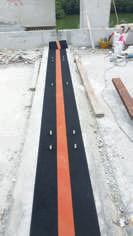



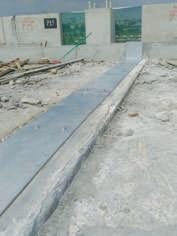


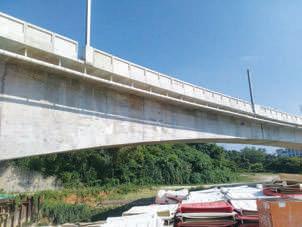








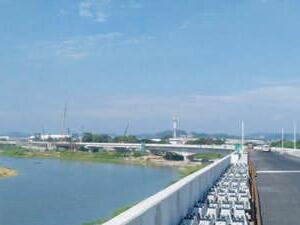


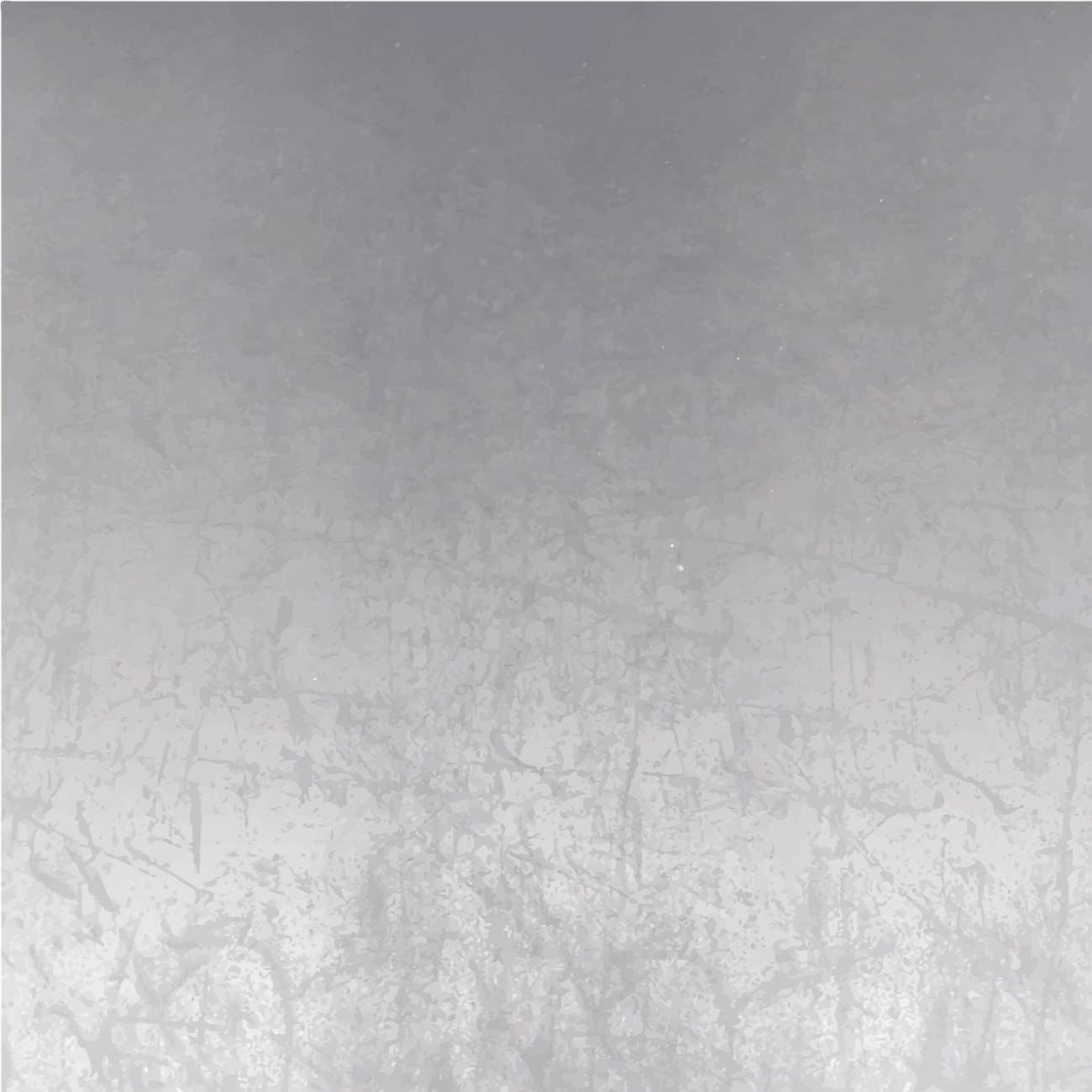

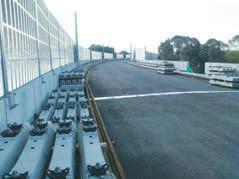





Our esteemed readership consists of ceriied engineers, decision making corporate leaders, CEOs, government oicials, project directors, entrepreneurs, project consultants, engineering consuling irms and companies involved with engineering products and services.
JURUTERA is circulated to more than 42,000 registered members of The Insituion of Engineers, Malaysia (IEM), with an esimated readership of 168,000 professionals.
Our business partners can be assured that their products and services will be given the circulaion and exposure it deserves, thus maintaining a sustained adverising presence to our core readers of decision-making engineers and technical experts. Our website ofers an even wider market reach, with added internaional presence, aided by our internaional ailiaion with oicial engineering bodies all over the world. Our online and oline adverising features such as banner adverising, aricle sponsorship and direct e-mail announcements have proven to be successful markeing strategies that will set the businesses of our partners apart from their compeiion.



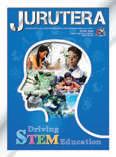



For adverising enquiries, please contact:



